

TOP BC WINE AWARDS
Greenhouse growth for strawberries





2304

3626 Glencoe Road,
Asking

15829 Greenhow Road,




8100-8104 Silver Star Road, Vernon
Asking














2304

3626 Glencoe Road,
Asking

15829 Greenhow Road,




8100-8104 Silver Star Road, Vernon
Asking






Representation of Buyers and Sellers for Horticultural, Farm, Acreage and Estate properties throughout


Scott Marshall was born and raised in the Central Okanagan and is part of the 5th generation of his family to live in the beautiful Okanagan Valley. The Marshall Family has a proud history in fruit farming in the Central and North Okanagan since 1911, while the Thorlakson side of the family started farming in the North Okanagan in the late 1800s. Scott's parents operated large orchards and nursery plantings, and he grew up with them working in the Okanagan Real Estate market.


After completing four years of formal education at the University of British Columbia, Scott received a BCOM in Finance and Real Estate before becoming a licensed REALTOR® and Associate Broker at RE/MAX Kelowna. Since becoming licensed, Scott has quickly become a natural expert in the Horticultural, Viticultural, Farm, Acreage, Estate and Unique Property market. Scott has been able to professionally assist his valued clients so that when they are successful in their real estate buying or selling, he has also been able to be successful and is ranked as the #1 Individual Realtor at his brokerage.*



Scott is uniquely quali ed to e ectively assist with the purchase and sale of Horticultural, Farm, Acreage, Estate and Unique Properties throughout the Okanagan. To take advantage of ve generations of valued agricultural experience in the Okanagan, call Scott Marshall for your farm property needs!


a sales history that speaks for itself has never been more important. I'm not afraid to get my boots dirty. “ “
In today's
market, marketing
reach,
industry connections, and







Established in 1959
ISSN 1713-5362 ISSN 2817-500X
Vol. 65, No 4
Innovation Issue | July 2024
Publisher/Editor Yvonne Turgeon
Associate Editor Ronda Payne
Design Mishell Raedeke
Contributing writers
Kelly Josephson, Ronda Payne, Myrna Stark Leader, Monique Tamminga, Melissa Tesche, Matt Treble, Yvonne Turgeon
Contributing photographers
Jon Adrian, Jake Chapman, Ronda Payne, Monique Tamminga, Yvonne Turgeon, Trevor Walker
Embracing new ideas and new approaches is the vital force of innovation that drives progress and improves lives. Today, we see the surge of technological innovation merge with agriculture and witness the rapid adoption of artificial intelligence.

As we were preparing this annual Innovation Issue, I recalled my university classes when we learned of the ‘clock of communication’ that charts the one million years we’ve been on this planet together.
The clock sets out that time as if humans have lived one day, timed on a 24hour clock: one hour of that day would equal 41,667 years; one minute of that day would be about 694 years; and one second would be about 12 years. As the theory book reads, “When we start this clock at midnight, it will be 1 million years ago. Twelve o’clock noon will be 500,000 years ago. When the instrument reaches midnight a second time, we are in the now, looking into the future.”1
Orchard & Vine Magazine is published six times a year and distributed by addressed mail to growers, suppliers and wineries in the Okanagan, Kootenays, Fraser Valley, Lower Mainland, Vancouver Island, Washington State and across Canada.
Subscriptions
Subscriptions are available in print and digital format at orchardandvine.net or contact us at info@orchardandvine.net.
Social | web @orchardvinemag | orchardandvine.net
Office: 250-448-2630
Email: info@orchardandvine.net news@orchardandvine.net
Publications Mail Agreement No. 40838008
Return undeliverable items to: Orchard & Vine Magazine 5190 MacNeill Crt Peachland, BC V0H 1X2
Equivalent trees planted for every pound of paper printed with Mitchell Press.
All rights reserved. No part of this magazine may be reproduced in any form, print or electronic, without the written permission of the publisher. Ideas and opinions expressed in the magazine do not necessarily represent the views of Before & After Media or its affiliates. The publisher does not assume any responsibility for the contents of any advertisement or sponsored content in this publication.
Orchard & Vine Magazine is published by Before & After Media Inc. Find them on the web at beforeaftermedia.com.
Much of the first half perhaps the first three quarters of humankind’s day on earth must have been taken up largely with learning to live in the rough and challenging ice ages (yes, those glacial sheets that left all that lovely sediment of sand, gravel and soils that have transformed into medal-winning vineyard and orchard blocks.)
As early humanity huddled to keep warm, made fire and hunted, communication was mainly nonverbal, with a few grunts and cries. Then came the first great step in human communication: language. The innovation of language emerged at nearly 9:33 p.m. on our clock, 100,000 years ago. And yes, shortly after that, agriculture was born.
We moved out of the caves and found ways to grow food where we made our homes. Our ancestors discovered a hybrid of wheat they could carry with them and plant, and as those ice sheets melted, we headed north. Over new pathways we wandered around an unknown world, finding new places to settle.
Innovation always comes with challenges. It often requires substantial investment, and as these early ancestors knew, there is always a risk of failure.
Many more minutes (or tens of thousands of years) pass before the greatest intellectual achievement of humans: the invention of writing nearly 5,000 to 6,000 years ago. On our history clock, the hands have moved to almost seven minutes before now. And pow: an explosion of communications, from the printing press all the way to the microchip, and we move rapidly onward to today’s emergence of AI. No one living on the planet knows a time when communications technology and innovation do not abound.
Here in this issue, we’re sharing more stories of innovation. For without communication there is no innovation.
— Yvonne Turgeon, publisher yvonne@orchardandvine.net
1 Wilbur Schramm, The Story of Human Communication: Cave Painting to Microchip, 1988

Agriculture Equipment & Supplies
• Agricultural
• Residential & Commercial Irrigation
• Accessories
• Fencing
• Gates
• Posts
• Biologicals
• Fungicides
• Granular Fertilizers
• Growth Regulators
• Herbicides
• Insecticides
• Liquid Fertilizers
• Organic Fertilizers & Nutrients
• Organic Pesticides
• Simples & Soil Amendments
• Water-Soluble Fertilizers



• Agricultural Water Submission
• Compost/CQA
• Feed Submission
• Plant Disease Diagnostics Submission
• Plant Tissue Submission
• Sap Analysis Submission
• Soil Health and Nutrition Submission
• Animal Feed
• Bags
• Boxes
• Carraro™ Equipment
• Farm Tools
• Ladders
• Livestock Supplies
• Mesh Bags
• MOM Machine
• Mulch Films & Crop Covers
• Picking Equipment
• Plastic Rolls
• Pruning Supplies
• Pulp Fibre Containers
• Rain-Flo Equipment
• Revo Piuma 4WD
• Salt Blocks
• Salt Misc
• Seed
• Tying & Training Supplies




The Ontario government has awarded Brock University $3.5 million for a national sustainable agricultural project that will see the University’s innovative grape and wine research expand into other areas of the agricultural sector.
Funding from the Ontario Research Fund — Large Infrastructure Fund program supports the threepart Clean Agriculture for Sustainable Production (CASP) Field Infrastructure project. Central to the project is the Brock-led research farm where scientists from Brock, other institutions and industry will develop and test out agricultural innovations.
Co-leading the multi-institutional initiative are principal scientist Sudarsana Poojari and assistant professor of Biological Sciences Jim Willwerth, who are both with Brock’s Cool Climate Oenology and Viticulture Institute (CCOVI).
“The Ontario government has recognized the time is now to be proactive in building resiliency and sustainability into Ontario’s $5.5-billion grape and wine industry by supporting this university-industry partnership,” says CCOVI director and core scientist Debbie Inglis.
Brock held a ceremony at the site of the future research farm — south of the University’s main campus — to celebrate the Ontario funding, which was announced last month by Minister of Colleges and Universities, Jill Dunlop. The Ontario grant matches a $3.5-million commitment from the Canada Foundation for Innovation (CFI).
“Ontario’s grape and wine sector supports critical rural economic development, both in Niagara and across the province,” says Sam Oosterhoff, member of Provincial Parliament for Niagara West. “This provincial funding for Brock University through the Ontario Research Fund will help support sustainable local farm practices and establish a home for Canada’s first Clean Plant Program for grapevines at the University’s new research farm.”
The Clean Plant Program, which is the initial phase of the CASP project, builds on initiatives — including the national grapevine germplasm repository, the Canadian Food Inspection Agency partnership CLEANSED, and the Canadian Grapevine Certification Network partnership — where CCOVI and a wide variety of partners work together to produce certified virusfree grapevines for the grape and wine industry.
Poojari says Canada needs close to 6.2 million clean grapevines each year, and at present is reliant on imports, which is not ideal given high transport costs, time constraints and supply chain issues.
“Growers are the ones who suffer because of the delays in getting the plant material. They need varieties more suitable to our soil and climate conditions,” says Poojari. “We need to be depending on ourselves rather than on other countries.”

“Growers are the ones who suffer because of the delays in getting the plant material. They need varieties more suitable to our soil and climate conditions.”
—Sudarsana Poojari, principal scientist, Grapevine Virology, Brock University
He notes most of Canada’s nurseries are concentrated in Ontario.
The second phase of the CASP project, Precision Agriculture and Ecological Interactions, examines how these clean grapevines interact with other plants and organisms. Understanding plant interactions in field and greenhouse ecosystems aims to enable the selection of more resilient crops and increase agricultural diversification.
Willwerth says a large part of Ontario’s horticulture sector includes grape and tender fruit.
“We are focusing on clean grapevines, but our research outputs pertaining to sustainable agriculture will be applicable to many other crops grown in Ontario,” he says. “This will help build Ontario’s food security, resiliency to threats like climate change, pests and diseases while increasing biodiversity in our agroecosystems.”
In the third phase of the project, the research farm will become a test bed for integrating innovative approaches into an urban setting.
The team also includes national collaborators Simone Castellarin from the University of British Columbia and Caroline Provost from Centre de recherche agroalimentaire de Mirabel in Quebec. —Courtesy of Brock University
Twelve audio tours from agriculture and gardens to night skies and wildlife, have been launched by non-profit, Discover Naramata to promote various aspects of the region. Three have been translated from English into Cantonese, French, German, Mandarin and Punjabi, making the highlights of Naramata accessible to locals and tourists alike.
One of the three tours starting in Penticton is Wine Geeks Only: Naramata Bench Terroir Driving Tour. Like the other tours, it is selfguided through an audio session available through the VoiceMap app. Simply enable GPS and the audio plays the right information at the right time and place. Walking, biking, or driving all work with the app.
“GPS-guided audio tours are like podcasts. They tell a story and lead visitors through the region,” says Cynthia Enns, Discover Naramata’s president. “From cycling on the Kettle Valley Railway, discovering Naramata Village’s charming garden lanes, or understanding wine terroir when driving across the breathtaking Naramata Bench, our visitors now have a local guide wherever they go.”
Travellers can stroll a Night Time Magic Walking Tour of Naramata’s dramatic dark skies, or learn about the unique climatic, geological and cultural factors contributing to local wines during Wine Geeks Only. Families can follow the Wonderland: Children’s Village Walking Tour or Farm to Plate Agri-tourism Trail Tour proof that wine country holds adventures accessible to everyone.
Enns is proud that the new audio guides promote so-called slow travel, a more sustainable form of tourism.
“The tours have a light impact on the community because they encourage people to slow down and enjoy the Naramata way of life. It’s a deeply enriching experience,” she says.
Visitors just select their adventure in the app, download, head to the starting point, and press play satellite GPS technology does the rest. A virtual tour option in the VoiceMap app plays the tours as podcasts, for “armchair” virtual travellers.
Since slightly less than 70 percent of British Columbians call English their mother tongue (67.1 percent, according to 2021 StatsCan data), Enns says that enabling tourists to participate in active tours in multiple languages was a priority.
The English audio tours are delightfully narrated by two popular local voices: retired CBC Radio veteran Marion Barschel and Peach City Community Radio host and local historian Craig Henderson. Penticton-based Roche Wines owner and winemaker Penelope Roche recorded the French guides. Other Okanagan residents translated and recorded the multilingual versions, including Lily Jin (Mandarin), Faye Wai (Cantonese), Arnica Rowan (German) and Saira Sangha (Punjabi).
“I translated and recorded a magic-themed night-time walking tour, the detailed wine terroir driving tour, and a wildlife biking tour, all into Punjabi,” says Penticton resident Saira Sangha. “It was so much fun. I hope my community enjoys exploring the Naramata Bench with me as their guide.”
Community groups and expert voices pitched in to help create and verify tour content: a wildlife biologist advised on the Wild Things Biking Tour, a local landscaper reviewed the Secret Gardens Tour and Naramata Bench Wineries Association provided vineyard data for tours such as the Wine Geeks Only Tour of the Bench.
To view the full list of audio tours, which range in duration from 30 to 60 minutes each, visit discovernaramata.com/audio-tours.




The FCC Food and Beverage Report reviews last year’s economic environment and highlights opportunities and risks for Canadian food and beverage manufacturers for this year. It includes projections of annual industry sales and gross margin index forecasts by sector.
Here are our top takeaways for 2024:
Canadian shopping habits are changing
The high inflation of 2022-23, along with the interest rate increases meant to combat it, has stretched household budgets. As food prices rose, consumers purchased more sale items and less expensive brands, shopped at low-cost retailers, and reduced the amount of food purchased. And these trends should continue in 2024.
However, there are still opportunities. Manufacturers should consider Canada’s diverse population and how to serve niche, but growing, markets. Innovating to meet health, convenience and sustainability demands can also help boost sales.
Sales volumes to moderately decline
FCC Economics projects food and beverage manufacturing sales will fall 1.4% in 2024, from $164.9 billion to $162.6 billion, and volumes are forecast to fall 2.1% (Figure 1).
However, one wildcard is the economy’s resiliency in the U.S., where most Canadian food and beverage exports are sent. If the U.S. economy continues outperforming expectations, export growth could surprise to the upside and turn the projected sales contraction into growth.
Figure 1: Sales, volumes forecast to decline slightly in 2024
remained hot, although the falling job vacancy rate suggests moderation is in the cards later this year. All told, the decline in the cost of goods sold will be larger than the decline in sales, providing a small boost to our margin index this year, which is up 1.5 percentage points on average (Figure 2).
2: Gross margins to improve slightly, but still tight
Sources: Statistics Canada, FCC Economics
Gross margins expected to improve slightly
In 2023, input costs began to stabilize and, in some cases (such as crop prices), outright declined. Fuel and transportation costs are lower relative to the previous two years, and the growth of packaging costs has slowed. We expect these trends to hold in 2024. Wage growth has
Statistics Canada, FCC Economics
Grocery price inflation has already slowed from its peak in late 2022 to early 2023, with February’s Consumer Price Index release showing grocery prices increased 2.4% YoY, the lowest since July 2021. FCC Economics forecasts that the inflation rate for food purchased at the grocery store will fall below 2.0% by spring and stay roughly between the 1.0% to 2.0% range for the remainder of the year (Figure 3).
Figure 3: Grocery food inflation rate will continue to decelerate in 2024
Grocery food inflation, YoY % change
Sources: Statistics Canada, FCC Economics
For the full report, including additional forecasts and commentary, go to fcc.ca/FoodBevReport
Ben Isaksen has spent 20 years in the beverage industry, starting in the London beer scene, working as a sommelier at Big White, and most recently as a lab technician at the BC Beverage and Technology Access Centre (BC BTAC) at Okanagan College (OC).
BC BTAC provides a range of services to the beverage industry.
“We do everything from solving biochemical issues with a particular drink, to working with them to get their beverages to market,” says Isaksen.
This spring, the Natural Sciences and Engineering Research Council of Canada renewed a $1.75 million grant for the centre.
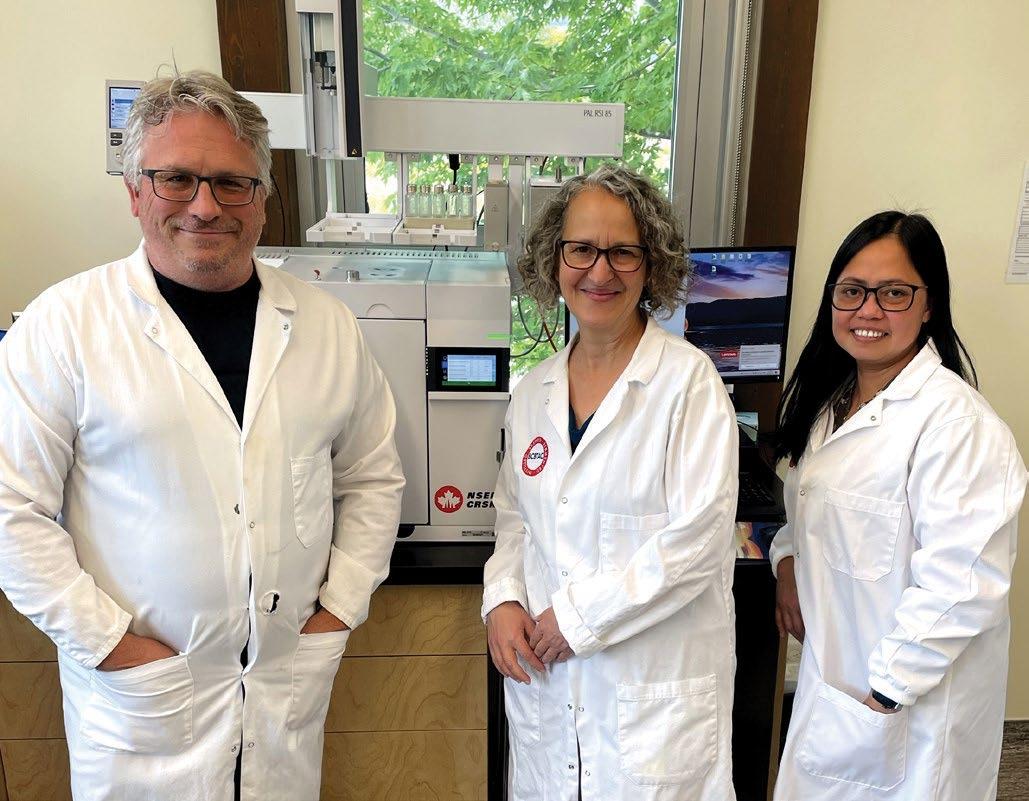
“This is incredible news for BC’s beverage industry and for Okanagan College,” says Dr. Neil Fassina, OC president. “BC BTAC has partnered with many different wineries, breweries, distilleries, cideries and other producers to innovate and respond to very specific and complex challenges. We’re thrilled to be able to continue working together.”
During its first five years, the BC BTAC has supported more than 130 individual beverage companies and organizations, through a wide range of projects that include removing smoke taint from wine where the grapes were impacted by wildfires, reducing the use of freshwater and remediating wastewater in beverage production, and reducing waste through up-cycling.
The Government of B.C. has also renewed its funding commitment to the BC BTAC of $100,000 annually for five years to support student involvement in the technology access centre.
With a Bachelor of Science in biochemistry and as a certified sommelier through the International Sommelier Guild, Isaksen is quick to point out that he’s just one of the many experts on the BTAC team, which includes lab technicians with expertise in chemistry, chemical engineering and microbiology, as well as experts and advisors in business development and other related fields.
“We love working in and with the beverage industry in this province, solving problems and ultimately contributing to their success and to the education and experience of Okanagan College students,” said Isaksen. “We look forward to continuing for years to come.”
The pages of Orchard & Vine Magazine are making a difference. Our parent company, Before & After Media, is part of a reforestation program where every pound of paper used to create our projects (like the magazine you’re holding right now) means a tree is planted in a forest that needs support.
Our printer, Mitchell Press, has been part of the PrintReleaf sustainability service that helps offset the printing and packaging industries since May 2023.
Because Before & After Media has been part of the sustainability program from the start, as of May 2024 we’ve helped plant 200 trees. All the reforestation projects through PrintReleaf are verified resulting in a net positive environmental impact and occur around the world.
See more about the reforestation projects at printreleaf.com and learn how we are part of more than 8,700 trees being planted a day.
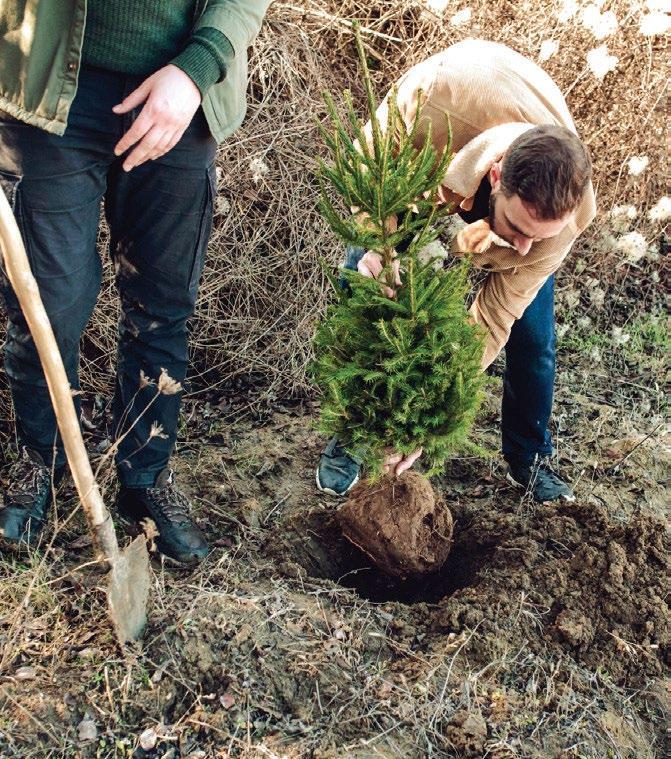
Clean Works Inc. and Genecis Bioindustries Inc. were named grand prize winners of Agriculture and AgriFood Canada’s Food Waste Reduction Challenge. This challenge supports highimpact solutions to food waste in Canada, aiming to extend the life of perishable food or transform food waste into new products.

Clean Works, based in St. Catharines, developed a solution using hydrogen peroxide, ozone and ultraviolet light to control mildew and micro-organism growth in pre-harvest fruit and vegetables. This technology increases produce shelf life by up to 20 percent, potentially preventing nearly 50 tonnes of food waste annually for grapes and spinach in Canada.
“Both food waste and food scarcity are increasing in Canada and globally, which highlights the importance of strengthening our food systems,” says Denise VanderVeen, from Clean Works Genecis Bioindustries, based in Toronto, developed specialized bacteria that transform food waste into compostable bioplastics. Over the last three years, the company has diverted over 2.1 tonnes of food waste from landfills, producing around 5,000 tonnes of bioplastic annually.
Both companies will receive up to $1 million to accelerate their solutions and support their deployment in the Canadian market. This initiative aims to increase food availability, save money, strengthen food systems and reduce greenhouse gas emissions.

Since 1967, we have hand-crafted our wind machines with precision technology. Growers from around the world trust Orchard-Rite® wind machines to protect their orchards from the dangers of frost. We are dedicated to serving you by providing the tools and service to stave off those frosty nights, protecting your harvest and your future. Find us at orchard-rite.com.
Adding ORCell™ allows you to remotely operate, monitor and manage your wind machines from anywhere in the world with internet connection. ORCell™ saves you time and reduces labor costs!



Photos contributed
Gatten® fungicide
Gatten®acts on multiple stages of powdery mildew development, delivering both preventative and post-infection control.


CohortWholesale.com

The cookbook offers easy-to-make recipes organized into three-course meals, each perfectly paired with wine.
Best-selling author, food and wine writer, recipe developer and passionate home cook, Jennifer Schell Lirag, wrote the book on recipes that pair well with a South Okanagan winery’s libations in the new Burrowing Owl Estate Winery Cookbook—Recipes for a Good Life.
Our team approach allows us to connect you to the right people who understand the business of farming so we can help you make the best financial decisions for your business.
Our team approach allows us to connect you to the right people who understand the business of farming so we can help you make the best financial decisions for your business.
Our team approach allows us to connect you to the right people who understand the business of farming so we can help you make the best financial decisions for your business.
Released in June, the 50 delicious and easy-to-make recipes are organized into 15, three-course menus. The content is inspired by the Burrowing Owl’s Wyse family: their travels, favourite dishes, offerings at the winery’s Sonora Room and the incredible offerings of the Okanagan region.






After more than three decades of producing renowned wines, the Wyse family has fine-tuned their philosophy for a good life, emphasizing warm hospitality and a commitment to green living. Guests at their family-owned vineyard in Oliver, B.C., often experience meaningful moments around a shared table with a bottle of Burrowing Owl wine.
Martyna Spichtig
Martyna Spichtig
Martyna Spichtig
Connor Watson BComm. FAB
Connor Watson BComm. FAB
Connor Watson BComm. FAB
Ted Hallman
Ted Hallman
Ted Hallman
VP - Agriculture Services
VP - Agriculture Services
VP - Agriculture Services
British Columbia & Alberta 403-470-0201
martyna.spichtig@td.com
British Columbia & Alberta 403-470-0201 martyna.spichtig@td.com
British Columbia & Alberta 403-470-0201 martyna.spichtig@td.com
Relationship Manager
Relationship Manager
Relationship Manager
BC Interior 778-201-5753
BC Interior 778-201-5753
connor.watson@td.com
BC Interior 778-201-5753 connor.watson@td.com
connor.watson@td.com
Account Manager
Account Manager
Account Manager
BC Interior 250-470-7557
BC Interior 250-470-7557
ted.hallman@td.com
BC Interior 250-470-7557 ted.hallman@td.com
ted.hallman@td.com
Ready for you

This is the first cookbook published by a family-owned B.C. winery, marking a significant milestone in the Okanagan region’s culinary history. It includes tips on wine pairing, a guide to what’s in season, winery history, and fascinating information about the winery’s namesake, the burrowing owl.
Priced at $38.95, the cookbook invites readers to the Wyse family’s table and celebrates their love of music by pairing each delicious menu with a musical suggestion, to help set the tone for celebrating ‘the good life.’
® The TD logo and other TD trademarks are the property of The Toronto-Dominion Bank or its subsidiaries. M05336 (1118)
® The TD logo and other TD trademarks are the property of The Toronto-Dominion Bank or its subsidiaries. M05336 (1118) Ready for you
® The TD logo and other TD trademarks are the property of The Toronto-Dominion Bank or its subsidiaries. M05336 (1118)
Growing

around



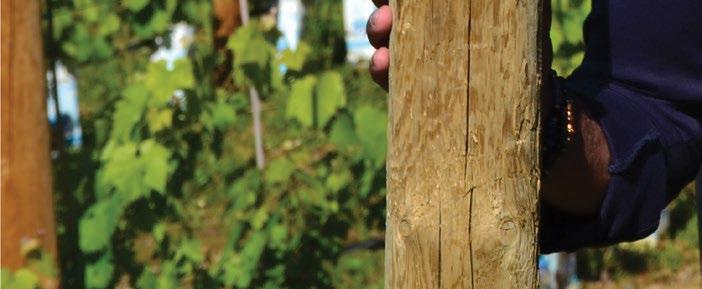
BY RONDA PAYNE
With the current economic environment and challenges with vines and growing conditions, few are thinking about starting a winery from the ground up, but AJ Cheema isn’t most people. The dream of creating a destination winery and restaurant in Langley, B.C., started pre-COVID, paused during the pandemic, and finally came to fruition with the opening of Otter Trail Winery in May.
The West Coast-inspired building stands across from Krause Berry Farms and Estate Winery in the heart of Langley’s farming community. The site used to be iconic Murphy’s Christmas Trees and Cheema’s mom, Harinder ensured trees were planted at the entrance to honour that history. The family bought the property 17 years ago with thoughts of turning it into a blueberry farm but Cheema soon shifted focus toward a different vision.
“I’ve always had an affinity for food,” he says. “My family has always gravitated to hospitality.”
Food is a natural connection with farming in the family’s background. Other members of the family grew




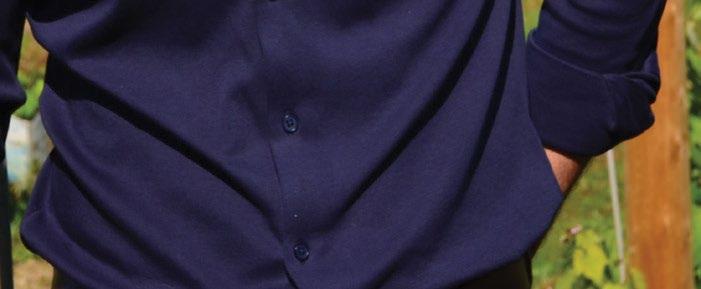


Photo by Ronda Payne
“I’ve always had an affinity for food. My family has always gravitated to hospitality.”
—Aj Cheema, Otter Trail Winery owner
leechee and mango in India and wheat in Saskatchewan. In this generation, Cheema, his mom and dad also have a 30-acre vineyard on Black Sage Road in Oliver that provides grapes for their two wines: a white Cuvee Blanc blend and a Cuvee Rouge red blend. These will soon be joined by two more blends coming this summer from winemaker Stefanie Dylla.
The Oliver property wasn’t left unscathed in the recent winter freeze. It remains to be seen how the Cabernet Franc, Cabernet Sauvignon, Merlot, Syrah, Siegerrebe, Semillon, Gewürztraminer and Chardonnay make out.
“When we were up there, watching from the upper bench down, we saw the wildfires taking people’s livelihoods away, then the frost taking 75 percent of the vines— it was hard to see,” Cheema says.

times
Although it’s not really a blueberry farm, there are blueberries planted at Otter Trail, but they take more of a backseat to other plantings. In time, the young Optima and Ortega white grapes making up two-and-a-half acres of plantings at the Langley site (just off the restaurant patio) will be included in the wine offerings. Taking a cue from the grapes themselves, the restaurant is called Ortega Bistro.
Knowing the restaurant was a key part of his vision, Cheema went to culinary school and worked in various restaurants in addition to attending sommelier school.
“The restaurant was always part of the package,” he says.
With a full liquor licence, Otter Trail Winery wine is accompanied by other wines and numerous cocktails to create an environment everyone can enjoy.
“I’ve been in the Township of Langley for seven years. I’m not a person who came to build a Cactus Club. My family is here, I’m invested here. My family is about this community. We want to provide something for people to enjoy.”

A summer of extreme heat devastated tree fruits across British Columbia in 2021, with the apple sector being just one of many that saw considerably lower yields and deteriorated quality at harvest.
Increasing the resiliency of crops will be vital in sustaining the apple sector going forward, and one way to do this is by selecting the right rootstock. Hao Xu, a research scientist at Agriculture and Agri-Food Canada, has discovered that larger and more vigorous rootstocks can play a key role in alleviating heat stress in apples.
Xu’s team at the Summerland Research and Development Centre conducted field trials with Ambrosia apples produced from five rootstocks of differing size: large-dwarfing Geneva 935 and Geneva 202; moderate-dwarfing Malling 26 and Malling 9NIC29; and small-dwarfing Budagovsky 9. By the end of the third growing season, trunk cross section diameter at 30 cm above graft union was 25.9 mm on Malling 9NIC29, which was similar to the other moderatedwarfing Malling 26, 13 percent larger than small-dwarfing Budagovsky 9 and
14 percent smaller than the two large-dwarfing Geneva rootstocks.
The team used a rapid and nondestructive handheld tool, an apple delta absorbance (DA) meter, to detect and evaluate symptoms of sunburn browning at the preharvest stage.
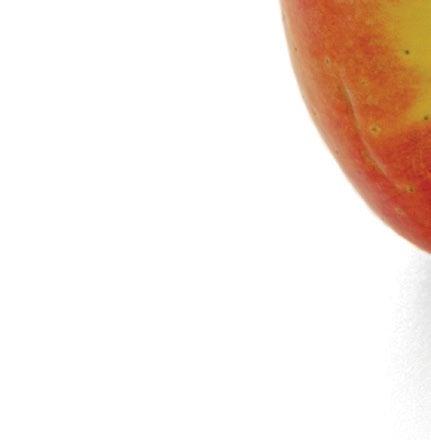
“We found that this tool was reliable and efficient in giving us a better understanding of heat stress related changes in the apple skin on a cellular level,” says Xu. “We’re now working on refining the protocol of using the DA meter to assist in early detection and evaluation of sunburn browning severities on affected fruits.”
After comparing and evaluating yields of each rootstock, the team found the large-dwarfing Geneva 935 the most successful in mitigating sunburn damage. The study revealed when soil moisture was adequate, larger rootstocks had a better capacity to transport water, which allowed for a higher stem water potential and a more transpirational cooling effect. Additionally, this rootstock was shown to produce a larger canopy volume, which helped in shading the crops against sun exposure. All of these



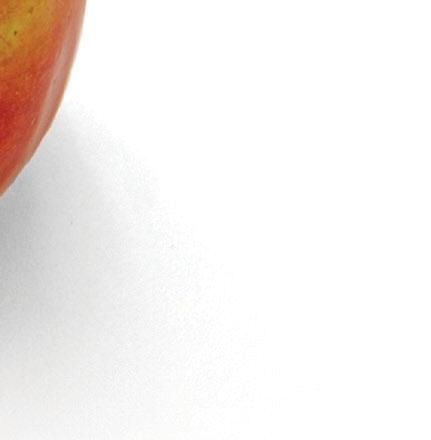
characteristics effectively contributed to alleviating heat stress in the crops and reducing sunburn damage.
Xu’s team found similar outcomes from trials with the Buckeye Gala variety, suggesting large-dwarfing rootstocks can benefit more than just Ambrosia apples.
“Our research will be vital in providing key information to facilitate decision-making on the use of innovative large-dwarfing rootstocks to enhance production resilience in a warmer climate,” she says.
As the climate becomes more unpredictable for growers, choosing resilient rootstocks could be pivotal for apple orchards’ long-term sustainability. While small-dwarfing rootstocks are the industry standard, Xu is hoping her research can demonstrate the importance of incorporating larger rootstocks.
“When managed appropriately, large-dwarfing rootstocks can not only increase yield efficiency per acre, but they can also enhance crop resilience to extreme temperatures.”
In April, Wine Growers British Columbia (WGBC) announced a governance review task group. Although there are vast industry issues, the last review was back in 2014.
Selected members from the WGBC board include Sheila Whittaker (Nostalgia Wines), Paul Sawler (Dirty Laundry Vineyards, chair), Sam Collins (Iconic Wineries of BC), and independent member Al Hudec. At-large members include Lauren Skinner Buksevics (Painted Rock Estate Winery), Chris Wyse (Burrowing Owl Estate Winery), Michael Bartier (Bartier Bros.), Ron Kubek (Lightning Rock Vineyards), Jim D’Andrea (Noble Ridge Vineyards & Winery) and Charlie Baessler (Corcelettes Estate Winery). Lindsay Kelm, acting
communications director of WGBC, will also join. The group will select a third-party consultant to recommend governance policy changes based on best practices.
The review will cover board composition, accountability, transparency, current policies, roles, responsibilities, and key performance indicators. It aims to clarify the roles and responsibilities of the WGBC board, committees, task groups, and other member-led initiatives. Additionally, the review will recommend how key performance indicators fit within the governance framework. A final report and recommendations are expected to be in place in time to bring forward any required bylaw changes for the AGM in September.


Kelowna Concierge and Jason Parkes Customs are launching West Kelowna’s first hop-on, hop-off wine shuttle.
“We’re excited to partner with Jason Parkes Brands to offer this unique and convenient service,” says Jon De Bruyne, owner and general manager of Kelowna Concierge.
“The new shuttle allows guests to explore the beautiful West Kelowna Wine Trail and its exceptional locations without the worry of transportation logistics.”
The shuttle will run Fridays and Saturdays from the Delta Grand Okanagan Resort, stopping at Crown & Thieves, Black Swift Vineyards, the hatch, Truck 59 Cidery and The Hatching Post Brewery & Smokehouse.
For $55 per person, guests can hop on and off between 10:30 a.m. and 6 p.m., creating their own itinerary. Guests can expect seamless transportation between locations, eliminating the need for driving and allowing them to fully immerse themselves in tasting experiences.
“This collaboration is a perfect match,” said Jason Parkes, founder of Jason Parkes Customs. “We’re creating an unforgettable experience for anyone who likes to have a great time exploring and indulging.”







Pairwise, a U.S.-based company pioneering genetics-based innovation in food and agriculture, has developed the world’s first seedless blackberry. Created using the company’s proprietary Fulcrum Platform, a complete suite of novel tools for CRISPR application in plants, this is the first time seedlessness has been achieved in any caneberry. CRISPR is a way to identify and edit DNA which allows for gene editing.
“We are thrilled to share this breakthrough achievement from our talented R&D team. Pairwise scientists have used their deep knowledge of plant genetics, broad suite of CRISPR tools and multiplex editing techniques to eliminate the hard pits in berry fruit, creating soft, small seeds like those found in grapes and watermelon that are commonly labelled as seedless,” says Ryan Bartlett, Pairwise chief technology officer. “The result is the first seedless blackberry in the world. We expect that this trait will not only transform the blackberry market, but it also lays the groundwork for accelerated progress in removing seeds and pits in many other fruits such as cherries.”
Recent innovations in produce have been rapidly adopted due to the significant benefits they provide consumers, such as improved flavour, consistency and convenience.
“The berry variety we edited is consistently sweet year-round and holds up well during shipment; now, consumers will have the option to choose a nutritious blackberry without seeds that also reliably delivers great flavour and quality,” says Haven Baker, Pairwise co-founder and chief business officer. “Blackberries are a snackable fruit with significant health benefits; however, data
“The berry variety we edited is consistently sweet year-round and holds up well during shipment; now, consumers will have the option to choose a nutritious blackberry without seeds that also reliably delivers great flavour and quality.”
—Haven Baker, co-founder and chief business officer, Pairwise
indicates that more than 30 percent of berry buyers do not like the seeds, and many more do not even buy the fruit because of the seeds.”
In addition to creating the first seedless caneberry, Pairwise has successfully edited the same variety to eliminate thorns and create a more compact plant that delivers benefits for harvesters, growers and the environment. The thornless and compact traits enable more efficient
fruit harvesting and improved productivity and profitability for growers. The new compact trait means the plants are smaller and can be planted at a higher density per acre.
Early data from Pairwise - led trials indicate the potential to greatly increase yield per acre while necessitating only a minimal increase in inputs meaning the water and land used per crate of fruit harvested decreases significantly.
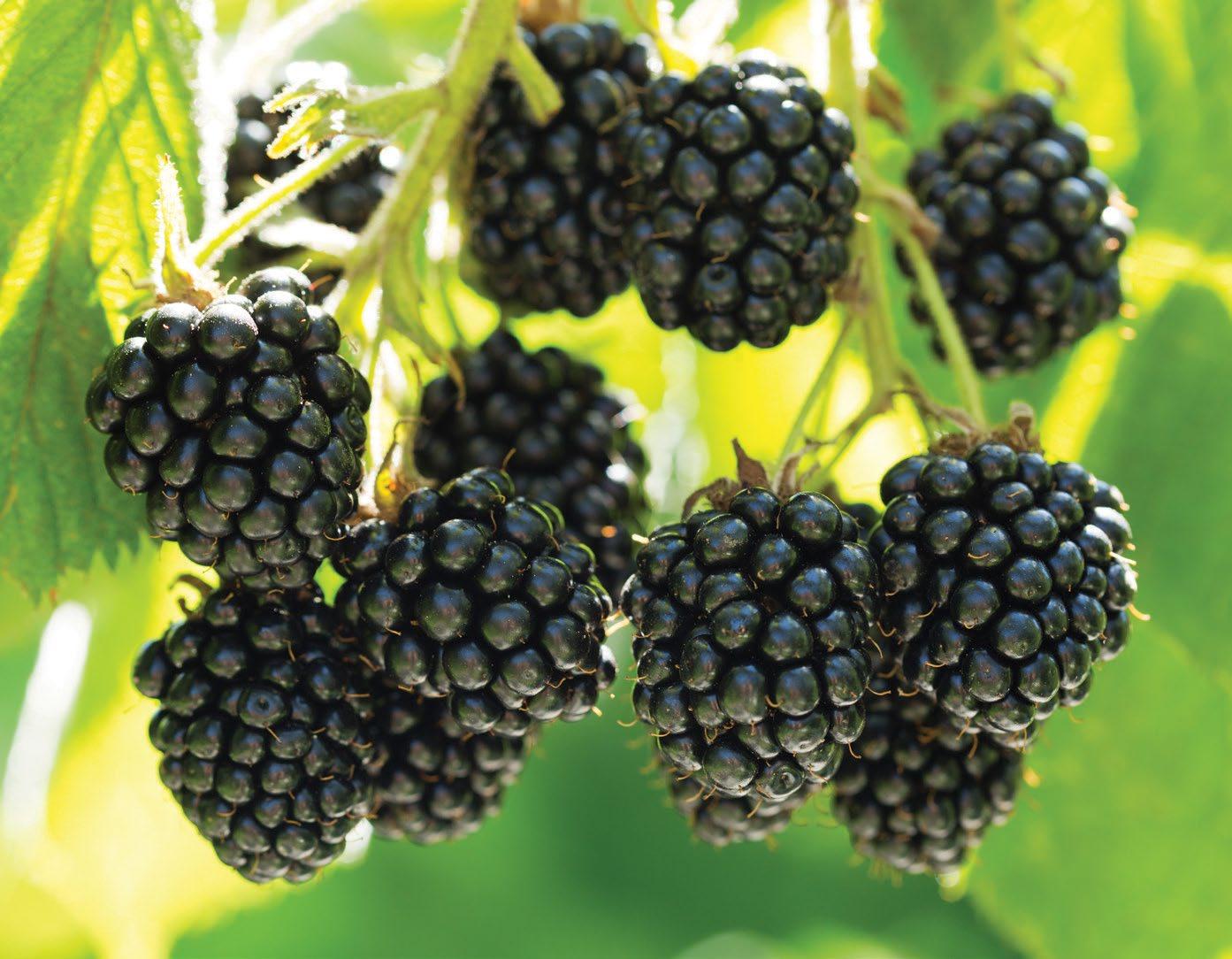
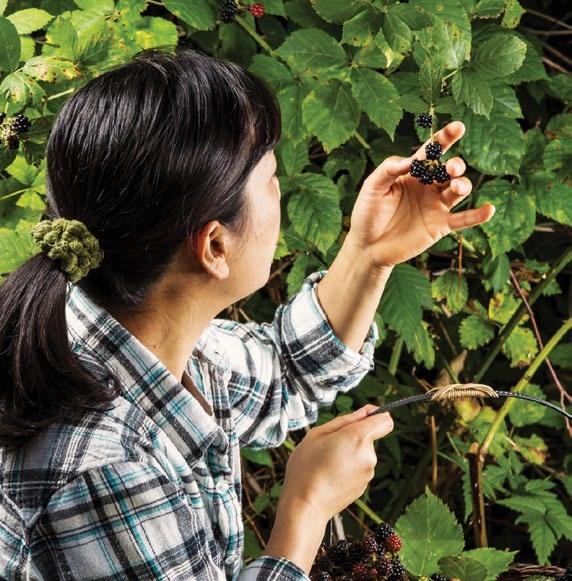
“Our high-density compact and thornless traits contribute to a more sustainable food system,” says Baker. “The absence of thorns and reduced height of the compact plants allow berry harvesters to better access the fruit and leave less on the plant, reducing food waste and further improving the growers’ economics.
“With the precision of CRISPR, we’re able to develop these thornless and compact traits without sacrificing consistency in flavour and quality for consumers. We’re excited to advance these berries into the next phase of product development, including outdoor field trials, as we work toward scaling up and making them available to the public in a few years.”
“A key challenge in our food system is helping people eat more high-quality, healthy foods,” says Tom Adams, Pairwise co-founder and CEO. “As part of our drive to increase the consumption of fruit and vegetables, we’re working to provide consumers with new, highly nutritious food options with improved flavour and convenience.
“With a deep understanding of the plant genome, an accurate, efficient, and scalable process, and streamlined pathway to commercialization, we are not only creating new products with our proprietary technology, we are creating a new era of innovation in agriculture.”


Continuing to bring your concerns and issues to government in





























Farming is tough enough at the best of times, with many sleepless nights this year. The cold snap this winter drastically e ected orchards and vineyards Province wide, and many farmers are facing financial challenges. I will continue to take your agricultural concerns and issues to the Government of British Columbia.



































Construction will begin this summer on the new Centre for Food, Wine and Tourism on Okanagan College’s Kelowna campus, which will support B.C.’s tourism sector and help train people for in-demand jobs.
“B.C. is expecting 91,000 new job openings in tourism- and hospitalityrelated industries over the next decade, and the majority of these jobs will require some form post-secondary education or skills training,” said Lisa Beare, Minister of Post-Secondary Education and Future Skills.
“This centre will equip students with the knowledge and experience they need to access these jobs and will provide employers in the Okanagan’s tourism and hospitality industries with the skilled talent they need.”
The new Centre for Food, Wine and Tourism will include modern teaching spaces, food labs, beverage research and development
facilities, and common spaces. The $55.8-million project received $51.8 million in provincial funding, while Okanagan College provided the remaining $4 million. The centre is expected to open for students in 2026.
“We are thrilled to be breaking ground on the construction of our new Centre for Food, Wine and Tourism at Okanagan College,” said Dr. Neil Fassina, president of Okanagan College. “This building will be the gateway to campus, welcoming students, community and visitors, while at the same time showcasing the region as a world-class destination for culinary experiences and so much more.
“This is the place where the next generation of leaders in hospitality and sustainable food and beverage production will come to learn, gain essential work experience, and to build connections that will last a lifetime.”
With a focus on addressing the labour shortage in food and tourism, supporting home-grown education in culinary arts, local food and beverage production, and worldclass hospitality services, the centre will bring together all food, wine and tourism programming on campus. It will also allow Okanagan College to expand its culinary enrollment by more than 125 students per year, and hospitality and tourism enrollment by 450 students per year.
Lisanne Ballantyne, president and CEO of Tourism Kelowna, added, “The new Centre for Food, Wine and Tourism at Okanagan College will help meet the critical needs of our tourism and hospitality industry, while building a resilient future of educated professionals and top-trained expertise to reinforce the Okanagan Valley’s reputation and brand as Canada’s centre of culinary, beverage, and tourism excellence.”

Pam Alexis, Minister of Agriculture and Food, emphasized the local significance of the project.
“The Okanagan has a rich history of producing incredible food and wine and sharing them with people from our province and around the world. Once complete, the new campus will also be the beginning of a new generation of chefs, vintners, innovators and entrepreneurs, all learning and working together to continue creating and serving the flavours that make the Okanagan such a unique place for residents and visitors alike.”
Okanagan College, with campuses throughout the Okanagan Valley and as far north as Revelstoke, has strong connections to sustainable and eco-friendly orchards and farms in the region, providing students with opportunities to learn through farm-to-fork and grape-to-glass practices, teaching the importance of sustainability and local supply chains.
Roly Russell, Parliamentary Secretary for Rural Development, highlighted the broader impact.
“Tourism, especially agriculturebased tourism, brings people to B.C.’s rural communities, and is the economic foundation of many of our local communities,” said Russel.
The centre will be the first of its kind for collaboration between students and businesses in the food, beverage, hospitality and resort industries. Through its focus on sustainability and strengthening local supply chains through partnerships with local farms and orchards, the hub will offer a stable source of skilled professionals in food, wine and tourism, helping mitigate supply-chain issues caused by extreme weather events and securing the future of these industries for the Okanagan.
Investing in Okanagan College’s new Centre for Food, Wine and Tourism is a part of StrongerBC’s Future Ready Action Plan, which is making education and training more accessible, affordable, and relevant to help businesses grow and prepare British Columbians for the jobs of tomorrow.

BRITISH COLUMBIA
250-809-6040
bcsales@vinetech.ca
ONTARIO
905-984-4324
sales@vinetech.ca


Grow your technical skills and deepen your scientific understanding. Unlock a wide range of career opportunities in the rapidly changing agriculture sector.
Offering diploma and bachelor degrees.

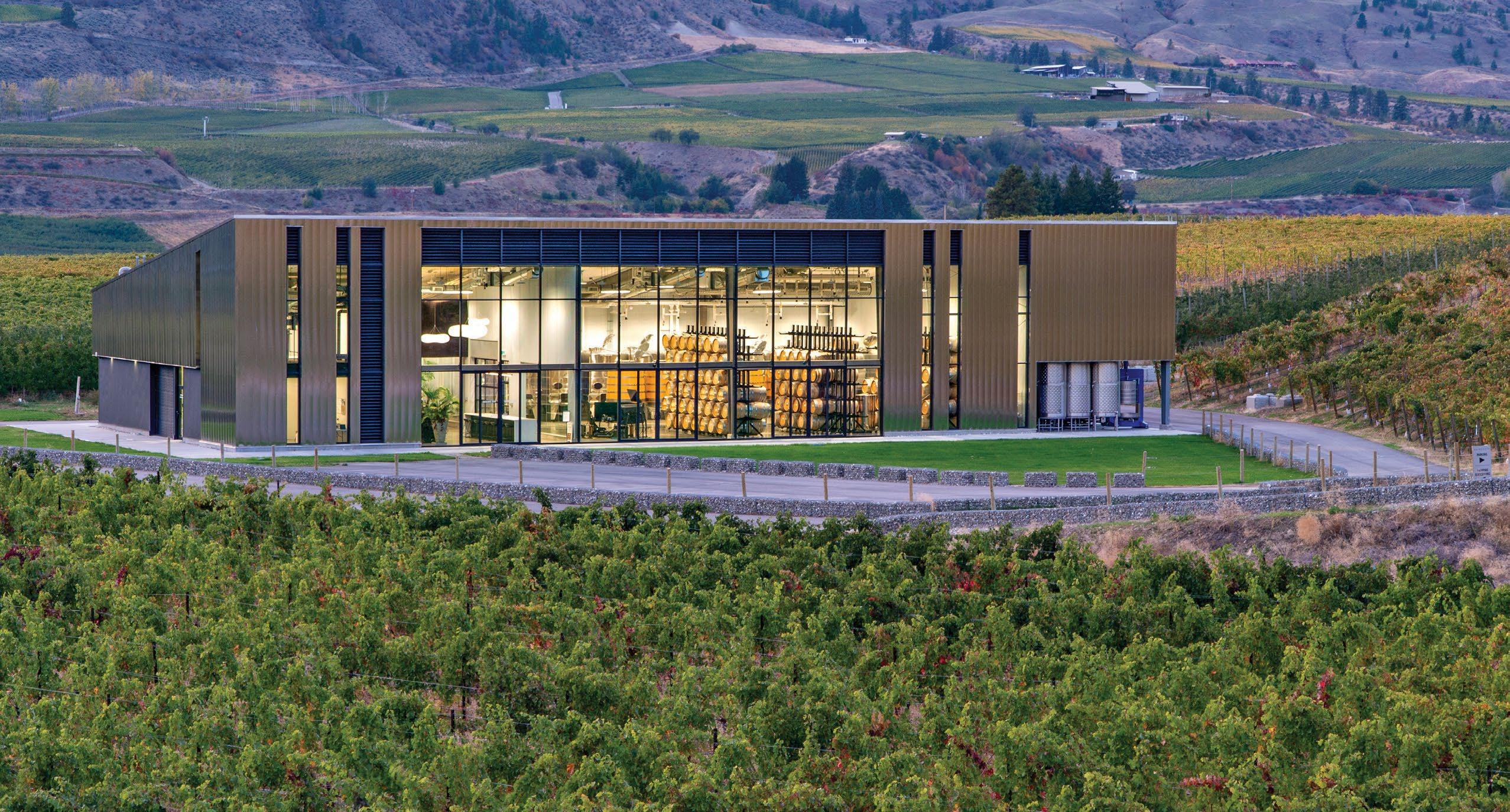
PRESENTED BY TRENDS MAGAZINE
These top wines of distinction, each crafted from B.C. grapes, provide a snapshot of a wide range of o erings from from all corners of B.C.
Orchard & Vine Magazine presents these wines of distinction from the annual competition featured in its sister publication, ompson Okanagan Trends Magazine. Trends Top BC Awards o ers a great guide to summer wine touring in the region —and an excellent opportunity for wine enthusiasts to discover the nest wines in the region and some new hidden gems. e panel of wine judges conduct a blind tasting to award bronze, silver and gold medals to the top wines of distinction, with each wine judged on its own merit of excellence for its class. e wines with the highest scoring in the
competition took home special honours. Oliver’s Rainmaker Wines won Top White Wine with its 2021 Rattlesnake Vineyard Viognier while Kaleden’s e Wine Umbrella 2021 Co-Syrah was judged Top Red Wine. Summerland’s Dirty Laundry Vineyards captured top honours for its 2022 Hush Rosé as did West Kelowna’s Volcanic Hills Estate for its 2022 Zweigelt Icewine. Langley’s Chaberton Estate Winery deserves special mention for its multiple medals: the white wines captured four golds and the red wines both a silver and bronze. All award-winning wines are currently available at winery boutiques or liquor stores across the province. ■
Traditional Method
Bronze
Hugging Tree Winery
2020 Blanc de Blancs $45
The Wine Umbrella
2017 Dames Brut $40
Frizzante Style
Silver
One Faith Vineyards
2022 Fizz Rosé $28
Bronze
Over the Fence Winery
2023 To the Moon $32
Top Pinot Gris
Gold
Gehringer Brothers
Estate Winery
2023 Private Reserve
Pinot Gris $18
Silver
Kalala Organic
Estate Winery
2022 Pinot Gris $23
Lakeboat Vineyard & Winery
2022 Pinot Gris $22
Bronze
Gneiss Wines
2023 Pinot Gris $33
Solvero Wines
2023 Pinot Gris $25
Gold
Orofino
2022 Home Vineyard
Old Vines Riesling $30
Silver
Upper Bench
2022 Riesling $26
Bronze
Orofino
2022 Hendsbee Vineyard
Clone 21B Riesling $27
Therapy Vineyards
2022 Riesling $28

Top Sauvignon Blanc
Gold
Chaberton Estate Winery
2023 Sauvignon Blanc $19
Bronze
Da Silva Vineyards & Winery
2022 Fume Blanc Hidden
Hollow Vineyard $34
One Faith
2022 Certitude
Sauvignon Blanc $28
Wesbert Winery
2021 Bettie’s Meritage
White $35
Top White Wine
Single Varietal
Gold
Chaberton Estate Winery
2023 Estate Grown
Bacchus $19
Chaberton Estate Winery
2023 Gewürztraminer $19
Rainmaker Wines
2021 Viognier Rattlesnake
Vineyard $30
Silver
Gehringer Brothers
Estate Winery
2023 Optimum Dry
Ehrenfelser $25
Bronze
Over the Fence Winery
The interplay of sun, soil and cultivars is showcased in Kim Pullen’s newest project Rainmaker Wines in Oliver (opposite). Grapes are sourced from vineyards from both sides of the valley to create a stunning portfolio, crafted with the assistance of
winemaker Caroline Schaller (left).



2023 Gewürztraminer $27
Rainmaker Wines
Gold
2022 Barrel Aged
Chardonnay $23.50
Upper Bench
2021 Chardonnay $28
Bronze

2020 Viognier Rainmaker Vineyard $30


Chaberton Estate Winery
Dirty Laundry Vineyards
2023 Unoaked
Chardonnay $21
Little Straw Vineyards
2022 Chardonnay $30
Rainmaker Wines
2021 Chardonnay $30
Solvero Wines
2022 Chardonnay $30
Top White Wine
Rainmaker Wines
2021 Viognier
Rattlesnake Vineyard
Top White
Wine Blend
Silver
Therapy Vineyards
2022 Freudian Sip $25
Bronze
Over the Fence Winery
2023 Hey Neighbour
White $28


e Fraser Valley’s oldest winery, Chaberton Estate Winery, was founded in 1981 by Claude and Inge Violet, French immigrants passionate about winemaking. e terroir, similar to that of some of the best wineries in Northern France, has proven an ideal microclimate to grow cool-weather grapes. e earliest plantings were of Bacchus vines imported from Germany, which thrive in the warm summers and are moderated by cooling Paci c Ocean breezes. e 2023 Estate Grown Bacchus
Top Pinot Noir
Silver
Gneiss Wines
2021 Pinot Noir $30
Kalala Organic Estate Winery
2020 Pinot Noir $28
Bronze
Da Silva Vineyards & Winery
2021 Pinot Noir $45
Off the Grid Organic Winery
2021 Heritage Pinot Noir $49
Solvero Wines
2020 Pinot Noir $35
Top Merlot
Silver
Chaberton Estate Winery
2019 Merlot $27
Da Silva Vineyards & Winery
2020 Merlot $38
Lakeboat Vineyard & Winery
2022 Merlot $35
Vasanti Estate Winery
2021 Merlot $35
Top Cabernet
Sauvignon
Gold
Orofino
2021 Passion Pit Cabernet Sauvignon $40
Silver
Da Silva Vineyards & Winery
2021 Cabernet Sauvignon
Outwash Vineyard $48
Upper Bench
2021 Cabernet Sauvignon $45
captured gold, as did the 2023 Barrel Aged Chardonnay, 2023 Gewürztraminer and 2023 Sauvignon Blanc. e judges awarded the 2019 Merlot a silver and the 2019 Cabernet Franc a bronze. Today, Chaberton Estate produces over 50,000 cases of wine a year under the direction of Anthony Cheng and Eugene Kwan, owners since 2004. ■

Bronze
Dirty Laundry Vineyards
2022 Cabernet
Sauvignon $30
Rainmaker Wines
2020 Cabernet
Sauvignon $40
Gold
Rainmaker Wines
2020 Syrah $40
The Wine Umbrella
2020 Co-Syrah $40
Silver
Orofino
2021 Syrah $32
Bronze
Wesbert Winery
2021 Syrah $45
Single Varietal
Gold
Rainmaker Wines
2020 Malbec $40
Vasanti Estate Winery
2021 Cabernet Franc $50
Silver
Vasanti Estate Winery
2022 Gamay Noir $30
Bronze
Chaberton Estate Winery
2019 Cabernet Franc $37
Da Silva Vineyards & Winery
2021 Malbec $40
Volcanic Hills Estate Winery
2021 Gamay Noir $21
Volcanic Hills Estate Winery
2020 Gidda Family
Estate Zweigelt $40


Gold
Wild Goose Winery
2020 Red Horizon $32
Silver
Orofino

2021 Red Bridge Red $28
Over the Fence Winery
2021 The Gatherer $50


Volcanic Hills Estate Winery
2016 Eruption $55
Bronze
Gneiss Wines
2020 The Chief $60


Kismet Estate Winery
2021 Karma $25
Orofino
2022 PTG $26
Over the Fence Winery
2021 Hey Neighbour Red $34

Robin Ridge Winery
2016 Frigate $37
Vasanti Estate Winery
2021 Cabernet Merlot $40
Wesbert Winery
2021 Wesbert Blend $40




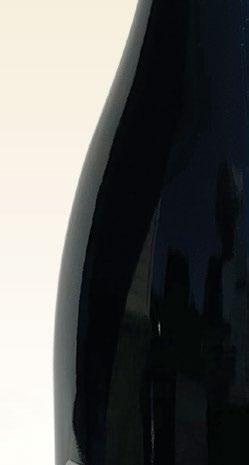



















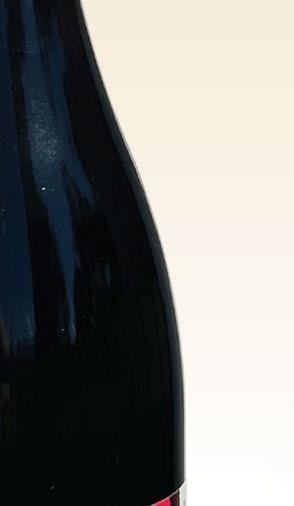

Top Red Wine
The Wine Umbrella
2020 Co-Syrah














































Winemaker Mason Spink, Dirty Laundry Vineyards



Top Icewine
Volcanic Hills
Estate Winery
2022 Zweigelt Icewine
ICE WINE



Top Rosé
Dirty Laundry Vineyards
2022 Hush Rosé
Gold
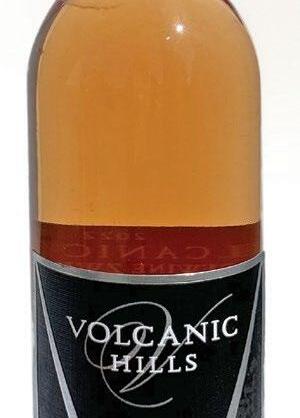
Top Ice wine
Gold
Volcanic Hills Estate Winery


Top Rosé
Dirty Laundry Vineyards
2022 Hush Rosé



$21



Upper Bench

2023 Rosé
Bronze


$19


2022 Zweigelt Icewine $49
Top Dessert Wine
Bronze
Ciao Bella Winery
2022 Fiume Family
Reserve Dolce Vino $59.95


Ciao Bella Winery

2023 Pinot Rosato
$29

Kismet Estate Winery

2022 Infinity Rosé $23
Over the Fence Winery
2023 Rosé $30
Vasanti Estate Winery
2022 Cabernet
Sauvignon Rosé $28






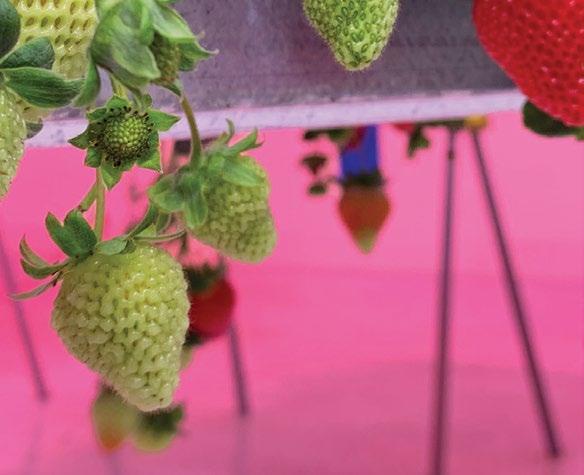


BY MYRNA STARK LEADER
Excitement over cannabis legalization in 2018 and access to capital spurred major investments in indoor production facilities across Canada, yet cannabis sales have fallen short of early predictions. By December 2023, Health Canada reported 1,480,895 sq. m of indoor licensed cannabis growing area, down from a peak of 2,217,216 sq. m in May 2020. While there’s limited data on the exact number of vacant sites, innovators like groHERE in Edmonton see opportunity.
GroHERE is leveraging a 36,000 sq. ft. (3,345 sq. m) former indoor medicinal cannabis operation for vertical strawberry production. Albertans’ demand for the berries is growing, with more than 33 million pounds imported annually, mostly from the U.S. or Mexico.
When fully operational, the private company aims to produce 80,000 to 1 million lbs. of strawberries annually. GroHERE president and chief operating officer, Gord Fritz,





says leasing the existing facility for five years with an option to renew for five more, made vertical strawberry production economically viable.
“It’s not easy to raise money for private companies and new ventures,” says Fritz. “The empty building had been renovated to produce medical grade marijuana for export into Europe and to Canada, a $12-million renovation, with at least $5 million worth of climate control systems, so we got a great facility at a good lease rate.”



Facilities built to grow cannabis that sit empty may fi nd new purpose in growing strawberries for the masses hungry for domestic-grown berries.




Canada imports $565.5 million worth of fresh strawberries.*


Canada imports $101.7 million worth of frozen strawberries.*

With eight 2,000 sq.-ft. (186 sq. m) rooms and 15-foot cseilings (4.6 m), the retrofit for vertical production was about $180,000.
“We removed a couple things like vaults (legal requirements for cannabis) and installed refrigerated walk-in coolers for storing berries. It was essentially turn-key,” says Fritz.
Plants rotate vertically on long shelves, based on a design from Singapore, modified and customized in Alberta, resulting in five times
the growing density compared to traditional one-level growing in indoor greenhouses. The real bonus is the facility’s existing heating and cooling equipment, helping meet a large day-to-day expense. Strawberries want ideal temperatures, 23 to 25 degrees Celsius during the day and 12 to 14 degrees at night.
“They require daily temperature change to create taste and flavour,” says Fritz. “If they don’t get cold, the plant doesn’t produce sugar and flavour, so our number one cost is cooling the building. Fortunately, the equipment that was installed is adequate for us.”
After 18 months experimenting in one test room to perfect the growing method, cultivars and conditions (LED light temperatures, times, humidity and nutrients), Fritz says they’ve ordered the equipment to build out their first full room.
“By January 2025, we should have all eight rooms in production or planting. Once that happens, we’ll be producing about one million pounds a year,” he says.
Fruit will be distributed through a South Okanagan fruit company with storage facilities in Edmonton, which should reduce the cost of transportation over imported berries.
GroHERE will be augmenting its facility with B.C.-based Nourish Labs’ automated precision nutrient formulation and delivery platform. Nourish Labs is a pioneer in precision fertigation.
“We will be seamlessly integrating our fertigation platform with the groHERE vertical conveyer system to control feedings, so it is fully autonomous,” says Blake Ponuick, CEO of Nourish Labs.
The system prototype was conceptualized by Nourish Labs chief product officer, Justin Valmont, 12 years ago in Vernon as Think Tank. Valmont gained expertise in growing cannabis for medical use after a severe car accident in 2010.
“I had 12 different fertilizers, 12 different supplements I would blend
to feed these plants to try and optimize yield and quality. I had a notebook and in a large mixing vessel, I would prepare each fertilizer solution for the different plants,” says Valmont. “Half my day was spent blending and feeding plants. I thought there had to be a machine for this.”
Finding no inline system designed for recipe changes on the fly, and with a background in agriculture and interest in robotics, in 2012, he built and patented an automated batch fertilizer preparation system. His innovation was a finalist in the 2022 Okanagan Angel Summit in Kelowna.
Now, several generations later, the Nourish Labs system provides consistent pre-mixed, homogenized and ph-balanced nutrients with millilitre precision. Benefits include more predictable crops, quality assurance, real-time monitoring, automated reporting, reduced labour need and less human error. Plus, when combined with vertical growing in substrate, less water and fertilizer are required reducing effluent waste.
“We are seeing what’s coined Farmer 4.0 emerging, the next generation of farmers taking over the family businesses and farmers who are datadriven, educated and tech-savvy,” says Ponuick. “They’re saying ‘I’m not going to do things the way they were done traditionally, I’m going to automate and data is incredibly important.’”
The Nourish Labs platform is in use at several facilities, including a 30,000 sq.-ft. (2,787 sq. m) indoor cannabis operation in Vernon, running 24 hours a day, saving labour and fertilizer costs
“By January 2025, we should have all eight rooms in production or planting. Once that happens, we’ll be producing about one million pounds a year.”
—Gord Fritz, president and chief operating officer, groHERE
and water, while helping mitigate impact on the environment.
“A customer in Drayton, Alberta, was forced to evacuate their operation due to wildfire in 2023. They could have lost their crop, but our system fed and watered the plants autonomously for 12 days, enabling a successful harvest,” says Ponuick.

Earlier this year, Nourish Labs was one of 13 companies to receive funding from the B.C. Centre for Agritech Innovation and Pacific Economic Development Canada. The $260,000 R&D project, in collaboration with UBC Okanagan (UBCO), will study optimizing plant nutrition.



“Cannabis is a high-value crop to afford the research, but the lower-value crops that are more high-risk might actually be the ones that benefit longer term.”
—Dr. Susan Murch, professor of chemistry, UBCO
Over the next 10 to 12 months, UBCO’s Dr. Susan Murch and her team will combine the precision of the Nourish Labs fertigation system with the UBCO-built system, which can measure 260 different plant growth regulators (triggers inside the plant that make it grow.)
“In this case, there was just a good merge between basic research, applied product development and the system development,” says the professor of chemistry. The goal is to hydroponically feed strawberries and wine grapes inside the climate-controlled greenhouse the exact nutrients, in the exact
quantity the plants require, using the Nourish Labs system for autonomous growing. This approach optimizes crop production and reduces nutrient runoff into the environment.
Murch thinks this kind of system has broad spectrum application in other indoor crops, particularly horticulture.


“Cannabis is a high-value crop to afford the research, but the lowervalue crops that are more high-risk might actually be the ones that benefit longer term,” says Murch, who’s spent thirty years working to crack the code of plant nutrition.
Back at groHERE, Fritz is closely watching all research results since he already likes Nourish Labs’ scalability for strawberry production.
“While it’s designed to run a large facility, you don’t need to buy all the equipment up front as we work through capital realities. We don’t want to buy something and then underutilize it,” he says, adding that the Nourish Labs modular system can expand as the strawberry facility grows.
Ponuick is confident the research will pay off.
“Cannabis isn’t easy to grow— different cultivars, different strains, so it’s imperative that the environment be fully controlled : temperature, humidity, CO2 levels, light intensities, plant nutrients and so on. With these facilities, designed to adapt to and create any environment, now you can potentially bring in any crop. Our mission is to have an impact on food production and security globally.” ■
Aplant’s life depends on the right amount of water. Too much or too little leads to disease, poor fruit quality, and plant death. It’s time to give plants the right amount of water, easily, reliably, and affordably. Irrigation is often the most time-consuming task for growers but with Verdi’s new automation technology, this will change.
Until recently, only the largest growers could afford automated irrigation. Smaller farmers were left manually turning on valves or trusting timers. However, Verdi, a company born out of UBC’s startup incubator HATCH, is changing this narrative. Verdi brings automation to everyone, making this beneficial technology affordable and accessible for all types of growers.
“They use far-out-there ideas; one of them was plant-level irrigation,” Kozak says of Google’s X and why the prototype that led to a contract with E & J
Gallo was created. “We have over 1,000 acres in British Columbia, Washington, Oregon, and California using our systems.”

Automated irrigation was invented decades ago, but very few farms in the Pacific Northwest use it.
“Turning on and off valves and pumps is just one of the four things we do very well,” he says.
In addition to reliable irrigation timing, the Verdi system helps growers create data-based irrigation schedules, detects system leaks and breaks, and delivers data on water use. Data leads to water savings which leads to cost savings.
All this is done without the need to bury wires, install solar panels, or change valves.
“We have ultra-low power and wireless controllers,” he says. “That’s the new technology. We’re cheaper and less complex than existing solutions. This is something growers have never seen before.” ■


Dried fruit isn’t new to retail, but delivering dried and freeze-dried fruit in new and innovative ways is important to draw in both retailers and their consumers who seek out healthy and tasty bites. The growth in this market is apparent around the world.
Despite the name, Oatme Superfood isn’t a cereal company, but rather a company focused on nutrientpacked flavourful snacks.
Oatme showcased its new freezedried Yogurt Bites alongside the existing line of 10 freeze-dried fruits at the 2024 Vancouver-based From the Ground Up trade show this Spring.
The annual event, put on by Good to Grow, is the food and beverage processing industry insider’s glimpse into what’s new, exciting and potentially, the next big thing. From lemon slices and raspberries to figs and dragon fruit, the Oatme’s freeze-dried fruit is perfect for a cereal topper, addition to yogurt or straight up snack.
Zar Negaran, a maker of numerous dried fruits based in Iran, contracted ZarifGraphic to create new packaging to appeal in chain stores and with exporters.
The journey began with creating eye-catching designs that made the products the star (photo right.) Various designs were developed with one selected to cater to the diverse range of Zar Negaran fruit products.
A rich colour palette for 34 distinct Zar Negaran products was curated in a way that wouldn’t take away from the necessary product packaging text. Multiple prototypes were crafted and scrutinized before advancing to printing where colour accuracy and presswork supervision were key.
The latest industry analysis on Europe’s freeze-dried fruits and vegetables market from researchandmarkets.com indicates significant growth potential. The report highlights an expected increase in
The BERRi lab proves an ideal space to learn how berries can adapt and thrive in a changing climate.
Berry growers at the Chilliwack campus of University of the Fraser Valley (UFV) feel a surge of excitement these days. With a new, nearly 1,000-square-foot lab and a recently appointed Canada Research Chair, berries are taking their rightful place at the top of agricultural lists.
As director of berry horticulture at UFV, Lauren Erland leads the Berry Environmental Resilience Research and Innovation (BERRi) lab. Erland was appointed Canada Research Chair in berry horticulture in March. Funds from federal and provincial bodies accompanied her appointment to create the new BERRi lab.
“The funding and having a chair positioned in the Fraser Valley in berry horticulture demonstrates the commitment of UFV and the federal and provincial government to berries,”

market value from $7.74 billion USD to $10.61 billion within the next five years.
As European lifestyles continue to evolve along with those around the world, the demand for convenient and quick meal options has escalated, contributing to the rise of the freeze-dried fruits and vegetables market. Plus, an inclination towards healthier and time-saving food, coupled with increased disposable income, has enhanced the freeze-dried fruit market. ■

she says. “We are in the last months of the renovation and are looking forward to a grand opening in the early fall.”
Growers will be invited to check out the tools that are going to deliver positive impacts on the berry industry.

One is a liquid chromatography high-resolution mass spectrometer. Beyond the usual analysis of firmness, sugars and colour, this tool takes things further into examining any chemical in the berry to help understand differences from variety to variety and responses to various growing conditions.
Erland says it’s time to ask questions about how things are changing and get scientific answers to support growers in their choices of varieties and management practices. ■

Combining modern-day behavioral theory with the concept behind a 190-year-old medicine delivery system, the brand strategy and creative hub Speakeasy has developed a simple yet striking way to help international kiwi marketer Zespri increase consumption of its nutritious fruit line.
Consumer research conducted by Zespri in its Singapore test market found that while the vast majority of adult respondents (93 percent) said they want to eat more fruit, more than half of them did not eat fruit daily, mostly because they simply forget to do so.


been in use for almost two centuries: the pillbox, which an International Electronic Journal of Medicine study found improves medication adherence by as much as 68 percent.
Speakeasy took these insights and developed the simple design idea that is easily recognizable and effectively addresses a historically complex challenge of trying to change human behavior, where billions of dollars were invested with little success.
Collaborating with business transformation company The Shed 28, Speakeasy enlisted a customized team to curate and develop a simple, intuitive solution: the Zespri Fruit Pillbox. First rolled out in Singapore, the Fruit Pillbox packaging is modeled after pill boxes that have long been used for medications and supplements. The packaging has seven compartments labeled from Monday to Sunday, with a Zespri SunGold kiwifruit in each compartment, intended to nudge people to eat fruit every day.


In a clever design touch, the Fruit Pillbox branding appears with a strikethrough on the “pill” portion of the name. In addition to listing the days of the week, one side of the packaging includes a “Why a kiwi a day?” section, with a list of the fruit’s nutritional benefits.
Working with packaging specialists PackFora, the Fruit Pillbox is made with recyclable material and vegetable-based ink. As a commitment to inclusivity, the days of the week are also imprinted in braille, making it accessible to the visually impaired.
The key to the packaging is its simplicity, using intuitive visual design and a clear, uncluttered aesthetic. People are disciplined when it comes to taking their daily medications. One reason why is a low-tech invention that’s
Creative in-store POP displays resemble enlarged versions of the Fruit Pillbox, using the same look, branding and flip-tops to house the packaging.
Initial consumer response has been positive.
Zespri conducted a follow-up survey through a QR code printed on the Fruit Pillbox to track consumer reaction and behavioral changes and 75 percent of respondents said the packaging successfully reminded them to eat a kiwi each day. In addition, 71 percent said they are likely to repurchase kiwifruit in this packaging, and 67 percent liked the design.
Zespri believes in inspiring positive behavioral change towards a healthier community through the power of remarkable marketing. Inspired by Nudge theory, where consumers are subtly, gently and repeatedly encouraged to make positive changes in their behavior, the Fruit Pillbox aims to encourage a positive change in the eating habits of consumers, making fruit consumption a seamless and enjoyable part of their daily routine. ■

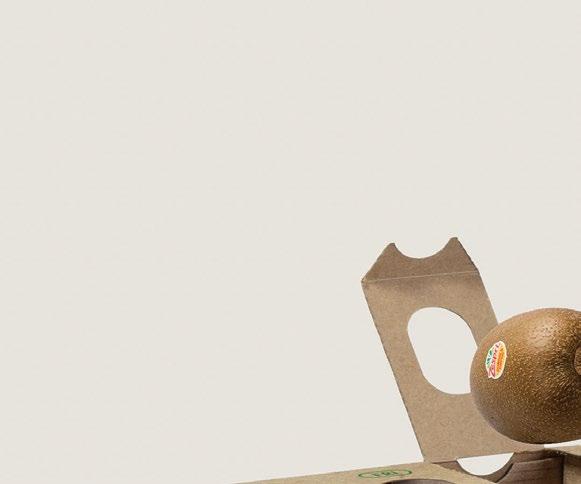


Eating fruit everyday stops being a challenge when familiar packaging formats make it easy.


Automated greenhouse controls simplify growing, yet multiple platforms often fail to communicate. Discovering resources that seamlessly integrate changes the game.
Sollum Technologies and Damatex are making greenhouse management easier. The collaboration brings greenhouse lighting control features of Sollum’s proprietary SUN as a Service cloud platform (SUNaaS) together with Damatex’s advanced climate control systems.
The synchronization of both control platforms consolidates multiple functions into a single, streamlined interface, reducing manual checks and enhancing system capabilities through enriched data sharing. This supports seamless data exchange and improved operational flexibility, while also minimizing configuration errors for more reliable control and better crop outcomes with less operational downtime.
Integrating systems into a single platform creates easier, more precise, growing conditions for better crops and reduced reliance on labour.
Damatex has become a trusted leader in climate control solutions for greenhouse and indoor facilities. Their products manage all production control requirements, including heating, ventilation, cooling and irrigation. Sollum Technologies designed the only 100% dynamic LED lighting solution that modulates the full spectrum of the sun’s natural light to illuminate closed environments. ■







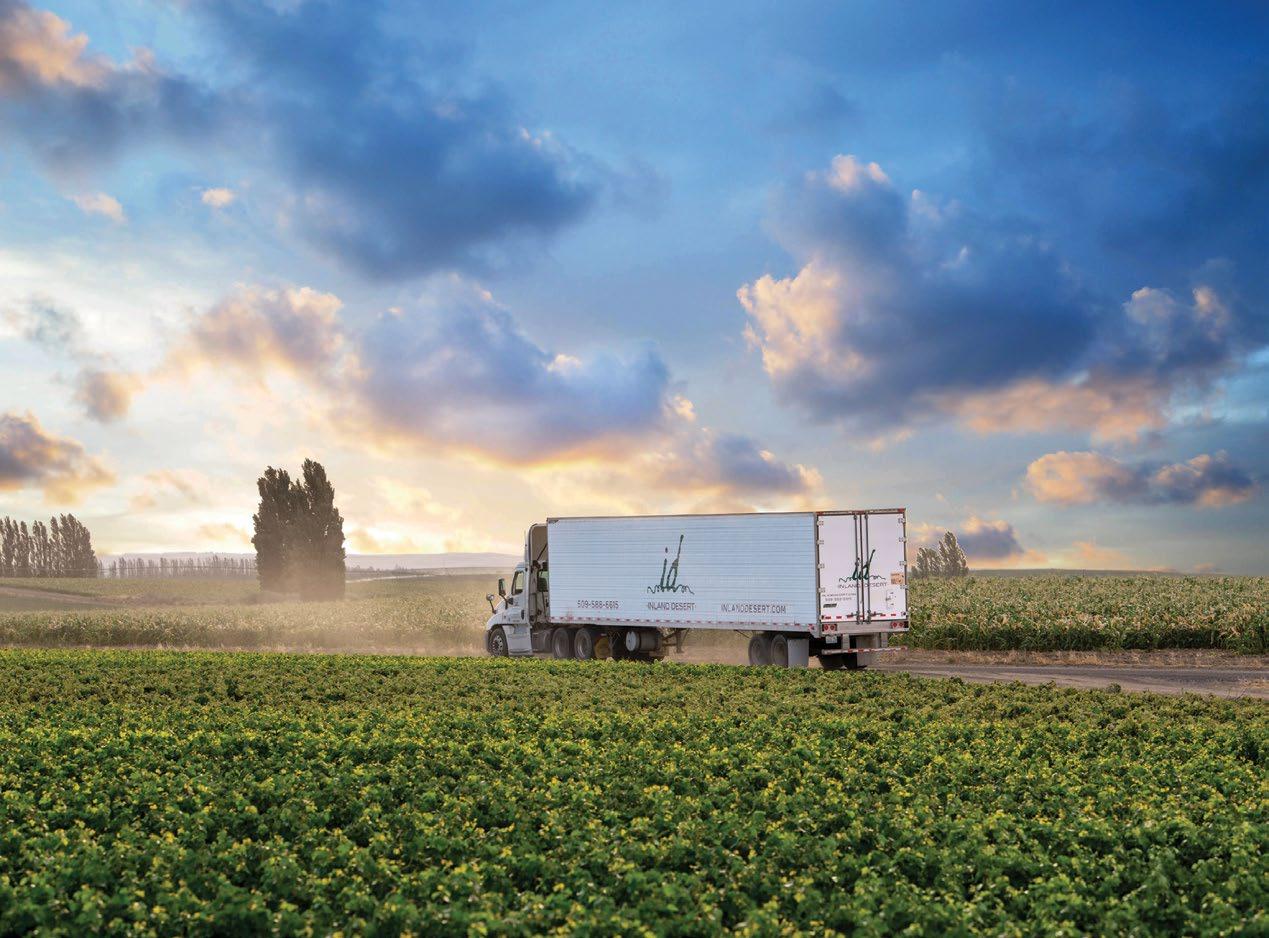






Vitis Vines Inc.’s roots were first set during a pivotal internship at the Kentville Research and Development Centre in Nova Scotia. Here, Thomas Gregoire discovered his true entrepreneurial calling. Kentville RDC is one of Agriculture and Agri-Food Canada’s network of 20 research and development centres across the country.
“My first internship out of school was with Dr. Sean Myles, where we conducted molecular breeding crosses on grapevines. He identified pretty quickly that I was more of an entrepreneur than an academic. He encouraged me to go that route and start a business.”
Gregoire is now at the helm of Vitis Vines and providing a much-needed supply of clean grapevines to an industry looking to replant thousands of acres destroyed by winter’s bitter cold.
However, it all began with bottles, not vials. Gregoire linked up with another professor at Acadia University and received a Nova Scotia Business Inc. Productivity & Innovation Voucher to examine the feasibility of starting a mobile bottling line.
The government program helps small and medium-sized companies access direct assistance and lets businesses seek expertise within postsecondary institutions to develop a new product, service, or process.
Gregoire got right to work. “I met with most of the Atlantic Canadian wineries in person with a questionnaire to understand their case capacity and their production goals to see if it was sufficient to support a bottling line.”
More than 12 years ago, the young wine region was not quite there to support the new venture.
Undaunted, Gregoire quickly pivoted—his entrepreneurial

approach to develop a questionnaire held the answer.
involves taking cuttings from the field, and as Gregoire notes, “Without testing each individual vine, you can’t know if that cutting coming from an existing vineyard has one of those viruses or not. And that’s how viruses are spread throughout new regions.”
Tissue culture is seen as a superior alternative as the initial single vine can be tested and certified virus-free and then propagated to create clean clones.
Since 2019, Gregoire has raised over $300,000 in undiluted funding from multiple funding sources, including four consecutive Invest Nova Scotia Productivity and Innovation Vouchers and a notable award from Spark Nova Scotia, a provincial entrepreneurial pitch competition for rural innovative start-ups.
Incorporation followed in 2022, after which Gregoire raised the capital required to purchase state-of-the-art equipment and establish the company’s first commercial tissue culture lab in the Annapolis Valley of Nova Scotia.


“My last question on the questionnaire was, what else do you need? And we found that many of them had put down a source of clean, virus-tested grapevines. So, I went back to Acadia after only having used half of the funds and asked if we could switch the scope entirely of what we’re doing. Because here’s the real need.

After nearly a decade of R&D at Acadia University, Vitis Vines has firmly established their SOPs and now has over 35 varieties of commercially important grapevines in culture, including wine (hybrids, vinifera and rootstock) and table grapes.







“At that time, not too many people were commercially producing grapevines by tissue culture, especially in Canada,” says Gregoire. Reaching back out to local wineries, they collected cuttings and began their work at Acadia to establish protocols and procedures to micropropagate vines in vials on gel.






The need for virus-tested starting material drove the project forward.




They are a handful of major viruses that account for over $35 billion lost to the global economy every year because of viruses and the impact that they have. Conventional propagation



In Colombia, and around the world, food waste is a significant problem. According to the United Nations Food and Agriculture Organization (FAO) and Colombia’s National Department of Planning, in that country alone, 6.1 million tons of food are wasted each year and 40 percent of which are fruits and vegetables. To address this problem, Makro Supermarkets, under their sustainability pillar, set an objective to not only help reduce waste at 22 of their stores, but to also educate consumers on preventing food waste in a cheap and easy way. Grey Colombia used a medium that has existed for decades in the fruit and vegetable industry: the humble and often overlooked fruit sticker.
The agency gave it purpose: to prevent food waste by extending produce’s life cycles through suggesting recipes based on the fruit’s ripeness and colour. This is especially important in the ripest stages because at that point, people are most likely to avoid purchase and consumption for cosmetic reasons. Modest fruit stickers became Life Extending Stickers. Printed in the traditional size of 2.7 mm, on biodegradable material, with ecological ink, with no need of technology only the help of colors, Grey showed Colombians an easy way to use fruits and vegetables from beginning to end. Makro gave Colombians an anti-waste tool that also helps them save money. ■








Streamline supply chain, drive e ciency and scale
With Omnae, all tiers of a supply chain connect, offering unprecedented visibility and e ciency. From the smallest supplier to the largest brand, all can communicate and collaborate effectively.
Automate your accounting, logistics and inventory and connect with partners through a single dashboard. Find out how Omnae and QuickBooks integrates to support limitless growth.

Are you looking to revolutionize your beverage products and stand out in the market? The BC Beverage Technology Access Centre (BC BTAC) is here to support the Canadian beverage sector with top-tier analytical, sensory, and business services.
Why Choose BC BTAC?
• Capture market attention with our cutting-edge research and innovation services.
• CIntegrate sustainable practices into your production.
• Overcome technical challenges with expert guidance and solutions.
• Enhance your team’s skills with our specialized training programs.
• Access Grants & Funding: Access financial resources for product innovation and research.
Ready to Innovate? Contact Us Today!
For more information, visit our website or contact us directly. okanagan.bc.ca/bcbtac • 250-490-3952 ext. 3207






For the rebranding of seven sparkling wines, Portugal-based 327 Creative Studio chose unique geometric designs and visual poetry to tell the story of each wine from Flik Sektmanufaktur.
The designers crafted seven distinct patterns, each one a visual poem reflecting the personality of the specific wine inside.
Imagine walking into a store and seeing these bottles. Some shoppers might read the labels, while others might stop and marvel at the shapes and colours. Typography as a design theme meshes with shapes to create an abstract impression of the taste. Think playful bubbles for a brut, or flowing curves for a smooth rosé.
The distinct patterns reflect the wine, yet also create a singular brand image. The use of vibrant geometric coloured shapes gives each bottle its own personality. Matte foil and rough paper create a cohesive theme, tying everything together.

A foil debossing adds a touch of luxury and provides a tactile experience. Consumers may be tempted to run their fingers to feel the raised shapes—a subtle invitation to explore the wine beyond the visual and taste senses.
This rebrand pushes the boundaries of packaging. It doesn’t just tell you about the wine; it makes you feel it. Good design can often elevate a product. Imagine if these bottles could interact with each other; when placed side-by-side, the patterns might create a bigger picture or tell a story. That would add an extra layer of magic to the collection. ■
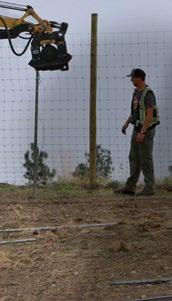












Forget metal, glass and plastic, the world’s first paper bottle is the new innovative way to bring wine and spirits to market thanks to Canadian company, KinsBrae Packaging. KinsBrae won the prestigious Product of the Year in the world’s largest consumer-voted award for product innovation, in the 2024 packaging category, with its Frugal Bottle.
The annual Product of the Year Awards provide a trusted resource to easily guide consumers to the best new products on the market.
Chosen by 4,000 Canadian shoppers in a national survey conducted by Kantar, a global leader in consumer research, KinsBrae’s KB Paper Bottle was a clear winner and was awarded the highly coveted red seal, recognizing the product’s innovation in the packaging category.
KinsBrae’s KB Paper Bottle is the world’s first commercially-available paper bottle designed for non-carbonated beverages. Made from 100 percent recycled paperboard, the bottles are five times lighter than a normal glass bottle, weighing just 83g.
The KB Paper Bottles also have a carbon footprint up to six times lower than a glass bottle, use 77 percent less plastic than a plastic bottle and have a water footprint four times lower than a typical glass bottle.
KinsBrae Packaging manufactures the KB Paper Bottle on the FBAM-1, a machine created by UK company, Frugalpac. This is the first paper bottle machine in the world and is now running at full production in Cambridge, Ontario.

KinsBrae manufactured the first paper bottles on the new equipment for partners Georgian Bay Spirit Co. The highly-awarded craft distillery is known among Canadian consumers for its Gin Smash. The introduction of Georgian Bay’s EcoFriendly Gin in KB Paper Bottles is a clear expression of an unwavering commitment to sustainability.
Released this spring at the LCBO and available nationwide, the new botanical-forward Georgian Bay Eco-Friendly Gin presents consumers with the unique opportunity to indulge in premium craft spirits while actively embracing a more sustainable lifestyle.
“This release encapsulates our collective pride in this partnership with KinsBrae,” says Denzil Wadds, co-founder of Georgian Bay Spirit Co. “A collaboration that not only drives positive change through innovation but also embodies our shared vision for a more environmentally conscious future.”

“It is amazing to see that Canadians love and believe in the KB Paper Bottle the same way that we do,” says Katy Saito, marketing manager at KinsBrae Packaging. “This innovative and sustainable packaging technology offers a disruptive and revolutionary alternative to the glass bottle, and we are excited to see more companies get on board with the KB Paper Bottle across the country.”
“We’re absolutely thrilled for KinsBrae Packaging for their well-deserved win,” says Malcolm Waugh, CEO of Frugalpac, makers of the paper bottle machine. “The fact [that] most of the 4,000 members of the public judging the competition made it a winner shows the KB Paper Bottle really was the people’s choice. We wish them well in making the paper bottle an even greater success across Canada so people can drink responsibly and sustainably.”
Frisky Beaver, an Ontario-based winery, was the first to launch wine in the paper bottle in Ontario and the Dam Good White and Dam Good Red can be found at the LCBO. Look for more wines and spirits in the KB Paper Bottle in select wineries, distilleries, liquor and grocery store locations across Canada. ■
Age-old wine production regions like France and Italy may scoff at the idea of alcohol-free wine, but Oddbird, Sweden’s largest producer of “alcohol liberated wines” seems to have unlocked the secrets of aroma, great taste and complexity without alcohol.
The chemistry of wine is one of the most complex things to work with. However, with the right people and knowledge Oddbird has gone beyond what others thought possible. Made from wine from leading French and Italian vineyards, the wines are traditionally aged for up to 12 months then carefully liberated from alcohol with a patented method that preserves the wine’s original character.
The biggest challenge for wine without alcohol is to create a complex mouthfeel, especially for red wine. With a focus set on cracking the code of red wine liberated from alcohol, Oddbird put together a team of scientists, winemakers, wine growers and enologists from France and Spain, and universities such as University of Burgundy (Dijon, France) and Örebro University (Sweden). Together, the team worked with sensory perception and conducted research by going back to soil and grape chemistry — working with innovative winemaking techniques followed by gentle removal of alcohol.
Presence and Addiction are two premium wines born from this research, with more additions to follow. They’re both unique in different ways and they show that Oddbird aims to change the culture of drinking through an engagement with science.
Presence is a white wine that’s very versatile. You can drink it on its own, as well as paired with any kind of food. This wine is born out of a collaboration between wineries from all of France. Together, Oddbird has put together a unique wine consisting of a Riesling foundation strengthened with a range of grape varieties from different French regions. It’s very aromatic, with layers of aromas ranging from fruity and flowery, to minerality and spicy. The expression becomes a combination of freshness, crispness and long-lasting mouthfeel and creaminess.
Addiction was created from the desire to bridge a gap in the alcohol-free market. Red wine without alcohol is known to miss the body and mouthfeel that a regular red wine can provide. Addiction changes that.
Oddbird’s research has focused on cracking the codes




of red wine. They went to the deep north of Spain for exceptional grapes and team of winemakers and enologists. The result is a wine with the complexity of an aged wine that evolves in your glass. A wine with layers of tannins that build in your mouth, going from silky to very rough. A wine with both spicy notes as well as the freshness of red fruits.
“It’s all me in a bottle, it’s my soul,” says Mihaela Mihnea, head of R&D at Oddbird. “I’ve put all the learnings together to make this happen; to develop a really good bottle of red wine.”
Addiction is dedicated to the people who enjoy a full-bodied wine. It’s dry, a little bitter and bold. It goes well with juicy, fatty foods such as cheese and meat. It’s made for the brave, for the ones who are looking for something special. For the ones that want to fall in love with red wine without alcohol.


Oddbird was founded in 2013 by Moa Gürbüzer, after working for 20 years as a sociologist and family therapist with a focus on alcohol-related problems. Her vision was to change society’s alcohol norms and make the question ‘Do you want wine with or without alcohol?’ as commonplace as “Do you want coffee with or without milk?” ■
Oof fresh produce, announces its groundbreaking collaboration with G&M Farms to introduce two exclusive proprietary blueberry varieties: Pink Cosmo and Hunkaberry. Both developed by horticulture professor Dr. Scott NeSmith of the University of Georgia and grown by G&M Farms in Fresno County, California, the brands redefine the traditional blueberry experience with their distinctive flavors, sizes and visual appeal.



“It’s been a collaborative effort to develop these exceptionally unique products that will differentiate the category,” says Tim Crane, Oppy’s category manager for blueberries. “Our marketing crew had a blast developing these brands, creating unique packs that deliver a sense of fun and intrigue to ignite trial — making them a stand-out in the berry aisle.”
Pink Cosmo offers a delightful blend of classic blueberry taste with bright floral notes,

Challenging the status quo will lead to healthier grapes and vines with research underway in Washington.
More than $1M in wine and vineyard research grants were awarded by the Washington State Wine Commission (WSWC). The research projects chosen target challenges that directly impact Washington wine grape growers and winemakers.
The WSWC Board of Directors approved 17 projects totalling approximately $1,067,000 for the upcoming fiscal year (July 2024June 2025). For the last eight years, the annual research grants have averaged about $1M and provided a stable funding base for the continuity of multi-year research projects.
A major focus of the research is to improve sustainable vineyard management strategies for weeds, soil health, pests and diseases, and irrigation. Last year, the Washington wine industry launched Sustainable
WA, a statewide certification program developed specifically for Washington. Already, about one-third of the state's wine grape acreage has been certified under the program. Sustainable research topics under study include confusing the mating of grape mealybug insects with sex pheromones, developing integrated weed management strategies, evaluating nematode-resistant rootstocks and using cover crops to trap and/or repel nematodes, controlling grape powdery mildew with ultraviolet light in combination with canopy management, and measuring the effects of viticultural practices on long-term soil health.
A new viticulture topic to be studied is how to optimize late-season irrigation to prepare vines for winter and develop bestpractice recommendations for

Washington wine grape growers. A better understanding is needed of the impact, if any, of late-season irrigation on vine cold acclimation.
Innovative winery research projects include a phenolic prediction tool for fermenting and finished red wines to make wine analysis faster and easier and reevaluate concentrations of molecular sulphur dioxide needed to inhibit bacteria and yeast in red and white wines. Washington State University (WSU) scientists continue to search for tools to mitigate the impacts on wine from frozen leaf material and wildfire smoke exposure.
Also, collaborative work of research teams from WSU and the University of California, Davis, who are working to advance the understanding of condensed tannins, is funded through the WSWC's research grant program. The goal of this project is to develop a novel approach to analyse tannins in wine.
The WSWC's Board annually allocates funding for the statewide grape and wine research program that is administered by WSU and its own research grant program. Support for the statewide research grant program comes from the public, private and industry sources of the WSWC, Auction of Washington Wines, WSU's Agriculture Research Center, and state wine liter taxes (1/4 cent per litre of all wine sold). The WSWC administers its own competitive grant program to support short-term, demonstration trials and other research beyond state borders that complements studies by WSU scientists.
Details about the research program and 2024/2025 projects can be found on the WSWC website at washintongwine.org. ■

Mental health is essential. Many things can cause stress and lead to burnout while working in agriculture. Farmers experience losses, whether it’s the loss of crops (such as this year’s stone fruit crops) or a loved one. But remember, talking about problems and sharing negative emotions is not a sign of weakness; it’s a sign of strength.
In the past, going to a counsellor or a support group meant driving to town for an in-person meeting—a challenge for most busy farmers. Because of this, often, farmers do not reach out for help and instead find themselves hurtling towards burnout or other mental health issues.
Managing your mental health alongside the responsibilities of your orchard or vineyard may seem challenging but with the rise of technological innovations, seeking support from fellow farmers or a counsellor has never been easier. It’s time to explore new avenues and tap into the readily available resources and support. This is about taking charge of your mental health journey on your terms and in a way that suits your busy schedule.
Mental health resources and support
AgTalk is a peer-to-peer support platform powered by Togetherall and designed for individuals in the Canadian agriculture industry.
How can it help? Peer support brings together people within the same community (in this case, agriculture) to help and look out for each other. For more information about the digital community, check out domore.ag/agtalk.
AgSafe’s mental wellness initiative provides accessible and free counselling services (virtual, by
phone or in-person) with mental health professionals to members of B.C. agriculture (services available in English, Punjabi and Spanish, depending on the service provider selected).
Individualized support can be immensely valuable, enabling you to delve deeper into your concerns while receiving coping strategies to navigate difficult times. The team of mental health professionals in this initiative is dedicated to supporting B.C. agriculture. To learn more about this initiative, check out agsafebc.ca/mental-wellness
The number 9-8-8 is a free, 24/7 phone or text-based crisis/support line available to all Canadians. Text or call 9-8-8 to access.
Crisis/support lines provide anonymous emotional support. The trained helpers will talk through what is going on for you while helping you navigate the emotional impact you are feeling. For more information, check out 988.ca.
Kids Help Phone is a free, 24/7 phone or text-based crisis/ support line available to Canadians 20 years of age or younger.
This crisis/support line specializes in supporting young people. The trained helpers will support you and help you navigate the emotional impact you are feeling. For more information, check out kidshelpphone.ca.
Getting creative and thinking outside the box
Many more resources are available, however, the question still stands— how can you find time to tend to your mental health while also meeting the demands of your farm? One of the best ways to start to navigate this is

to consider creative ways to engage with these resources and supports.
All the listed services are available in a virtual format, eliminating the need to carve out extended periods of time from your day to seek help. Virtual access can be seamlessly integrated into daily tasks. For example, by texting 9-8-8, you can discuss your situation with a trained helper. Instead of waiting by the phone for an immediate response, you can continue with your tasks and reply during natural breaks. Additionally, it is possible to schedule a virtual appointment with one of AgSafe’s mental health professionals at a convenient time, such as between chores or after supper.
Reaching out to others for support can help manage stress, strengthen the immune system and reduce physical and emotional distress. Innovations in mental health support allow farmers to get support at times that fit their busy schedules.
Let’s encourage open communication about mental health and support each other in seeking help when needed. This will allow personal growth and learning from mistakes, ultimately contributing to emotional strength and well-being.
Matt Treble is the manager of Suicide Prevention and Life Promotion at the Canadian Mental Health Association, B.C. Division. He has worked in the mental health field for many years and is excited to bring suicide prevention and mental health awareness to B.C. agriculture.

ineries in British Columbia offer flavourful, vibrant wines paired with warm hospitality and inspiring stories to each guest who walks through their doors. This year more than ever, wineries are elevating the guest experience even further with innovative ways to interact with wine, food, people and place.
A traditional tasting, whereby the guest is introduced to flagship and feature wines, is still a fantastic way to enjoy a stop at a B.C. winery, but there is a notable trend of wineries embracing creativity and ingenuity to offer something more. The Wines of BC calendar of events showcases the plethora of options available, with everything from culinary extravaganzas and educational winemakers’ sessions to crafting workshops, live music, meditation and yoga, local art, magic shows, rescue pet adoption events and more.
Wine and food
Palate-pleasing wine and food offerings range from the light and fresh and the lengthy and luxurious, to the in-themoment add-on to the book-ahead multi-course experience. Food is a natural wine tasting enhancer and B.C. wineries know what grows together goes together, with many options focusing on local fare. While local options abound, the passionate people behind B.C. wine also represent a diverse group of cultures, making for a wide variety of culinary themes on the menu at any given time in B.C. wine country.
Wine and people
While warm hospitality can be found around every corner, the B.C. winery

experience is unique from place to place and innovated year over year. Atmospheres and events are expertly designed in ways unique to the people behind the wine. Winery teams are full of creative people who sit down and ask themselves, “How can we best connect our guests to our wine?” Options include the presence of the winemaker, educational barrel and blind tasting experiences, cellar tours and more.
Wine and place
Wineries are leveraging B.C.’s breathtaking landscapes by organizing outdoor events centered around enjoying their stunning setting. Sunset wine tastings overlooking the water, picnics and vineyard hikes are just a few examples of the outdoor experiences offered. These events not only provide a unique backdrop
for tasting wine but also allow guests to connect with the unique sense of place that B.C. wineries celebrate.
The evolution of B.C. wineries’ guest experiences reflects a commitment to innovation and excellence. By offering a diverse range of events and tastings that cater to different interests and preferences, wineries are not only attracting new visitors but also fostering a deeper appreciation for B.C. wineries’ contribution to the cultural and economic fabric of the province.
Tourism is a key driver for the vibrancy of the B.C. wine industry. Wine Growers BC plays a major role in this effort. This year, more than ever, it is important to get the message out that B.C. wineries not only have excellent wine but also offer memorable experiences. By focusing on tourism with Sip, Smile and Stay Awhile
campaign messaging, we can help the B.C. wine industry recover from recent climatic challenges and thrive. As part of this effort, winery listings are now active on WineBC.com.
A majority of the Wines of BC brand marketing efforts this summer will be focused on trip planning for audiences in British Columbia, Alberta and beyond, driving people to these listings to shine a spotlight on B.C. wineries and their unique experiences and events.
In addition to marketing efforts, Wine Growers British Columbia is pleased to see the culmination of the Cultivating Experiences program result in the launch of brand-new wine tourism experiences now available across the province. Wine Growers BC and Destination BC partnered together to recruit 10 wineries to participate in a year-long program to develop an experiential offering from ideation to market-ready, with the end goal of elevating B.C. wine tourism. The curriculum was led by Firecircle and featured valuable market research, in-depth workshops, and one-on-one mentorship. The range of experiences developed speaks to the uniqueness of the B.C. wine tourism landscape.
Wine Growers BC invites the wine industry and wine industry supporters to participate in our Sip, Smile and Stay Awhile campaign to promote tourism to B.C. wineries. Tag us @WinesofBC in B.C. wine country adventures and use #BCWine.
Kelly Josephson is communications manager for Wine Growers BC which represents the interests of B.C. wineries dedicated to producing 100% B.C. grape wine. Follow @WinesofBC or find them on the web at winebc.com.
Scan for calendar of events.


















TCODLING MOTH CONTROL
he codling moth is both the proverbial and literal ‘worm in the apple’ when it comes to pome fruit. It remains the number one pest of pome fruit around the world, even after a century of pesticide arms races and the development of environmentally-friendly innovations like pheromone-based mating disruption and mass trapping.
The changing climate is working in the codling moth’s favour, and the apple industry in Washington State has recently struck a codling moth task force to grapple with continued seriousness of the pest.
At the annual Orchard Pest and Disease Management Conference in Portland this January, a retiring researcher shared codling moth control data from the early 1900s. Even after treatment with lead arsenate, the codling moth survival rate was still a remarkable 10 percent. Then along came DDT and then Guthion, both of which have long been replaced with softer formulations.
Pheromone-based mating disruption was a key innovation that allowed growers to reduce the number of spray applications required.












Most apple growers around the world use some combination of pheromones and pesticides, except in B.C. where an innovative sterile insect release program has been operating since the 1990s.
In the Okanagan and Similkameen valleys where the Okanagan-Kootenay Sterile Insect Release Program (OKSIR) operates, nearly half of the apple acreage is considered codling-moth-free.
Most growers in the program’s service area do not need to use any supplemental control sprays for








codling moth, and some growers haven’t needed to spray in well over a decade. Data from the program shows that the amount of pesticide used against codling moth in the region has decreased by over 90 percent since the program was put in place.
The OKSIR Program rears millions of the moths in their custom-built facility in Osoyoos, B.C., just minutes north of the U.S. border. Moth larvae, the ‘worm’ stage of the codling moth life cycle, are raised in cafeteria trays filled with a bran muffin-like diet














In the Okanagan-Similkameen region, nearly half of the apple acreage is considered codling-moth-free.
with a texture and moisture profile similar to the inside of an apple. The larvae spend several weeks in the tray eating and growing bigger. When they are ready to pupate, the humidity in the rearing rooms is dropped so that the diet in the tray dries out—it becomes less like an apple and more like the bark of a tree where codling moths like to pupate in the orchard.
The moths pupate at the surface and when the adults are ready to emerge, they leave their pupal casings and fly into the room. These specialized emergence rooms are kept pitch black, except for four slivers of light in the ceiling. As moths are wont to do, they fly toward the lights where they are immediately sucked up by a vacuum in the ceiling. They are sucked along tubing and into a specialized collection room where the temperature is kept around two degrees Celsius, cool enough to immobilize the moths.
Here the chilled moths are put into paper deli cups, about 3,200 moths per cup, half males and half females. A small portion of the moths are held back to mate and continue the facility’s production and the rest of the moths are exposed to a small amount
Serving the wine, cider and spirits industry for over
of radiation. The radiation leaves the moths sterile but still sexy, which is the ultimate goal of any sterile insect release

program—strict QA/QC protocols are in place to ensure that only properly sterilized moths leave the facility.
The sterile moths are released at least once a week into the orchards where they find and mate with wild moths—offspring from these matings are not viable.
The program was built on the research of scientists at the Summerland Research and Development Centre, part of Agriculture and Agri-Food Canada’s network. OKSIR is now entirely


operated locally and it is funded with a combination of an acreage tax for pome fruit growers and local property taxes. This built-in-B.C. program is the envy of apple-growing regions around the world and many countries are now trying to figure out how to start their own programs. New Zealand, Australia, France, the U.S. and South Africa are among the countries that have imported sterile moths from the OKSIR program for pilot programs and feasibility studies.
When I was invited to contribute to this Innovation Issue, I knew I wanted to share a glimpse into the OKSIR Program. Not just because I am proud to have spent the last nine years at the helm of OKSIR, but because the program is a testament to the power and possibilities when people think big.
There are a lot of challenges in our industry that seem nearly insurmountable—they require innovation and big thinking. But if the B.C. apple industry could do it with OKSIR in the ‘90s, we can certainly do it again
Melissa Tesche is the general manager of the BC Fruit Growers’ Association.

35 YEARS, with an extensive selection of equipment, supplies and premiumquality ingredients























6908 Palm Ave Burnaby BC Phone 604-473-9463
Toll Free 1-866-554-7273

orders@bosagrape.com








ecom.bosagrape.com

ith around 200 wineries in the Okanagan, it’s hard to narrow down which ones to try this summer. Most offer stunning views and beautiful tasting rooms and patios that showcase their wines. But if you are looking for a bit of an adventure and an experience completely unique, here are five wineries that are a feast for all the senses.
From a basement speakeasy in a castle to an Egyptian pyramid, a former brothel, a 12-storey bell tower and Canada’s only wine village, these aren’t just wineries but destinations. And the wine they produce is just as memorable as the experience. Here’s a curated list of five Okanagan wineries with great stories to tell and even better adventures.
Summerhill Pyramid Winery–
4870 Chute Lake Road, Kelowna
Summerhill Pyramid Winery has an ancient and somewhat mystical way of creating its organic award-winning wines. This Kelowna winery cellars their wines inside a bright white pyramid.
The pyramid-shaped cellar was constructed following the precise measurements of the Great Pyramid of Giza in Egypt and is the creation of winery owner Stephen Cipes. This unconventional cellar is believed to enhance the aging process of the wines through its unique energy dynamics. Touring inside the pyramid is a must. An ancient energy in the chamber is lit only by the crystal quartz skylights.
The grounds, gardens and ponds are stunning and bring you to the tasting room where you are greeted by a giant wine bottle pouring into a glass.
Founded in 1986 by the Cipes family, Summerhill vineyards are


certified organic and biodynamic. Onsite is a scenic restaurant, Nature’s Table, that overlooks the pyramid, vineyard and Okanagan Lake.
Crown and Thieves–
3887 Brown Road, West Kelowna Crown and Thieves isn’t just a winery; it’s like stepping into medieval-timesmeets-a-Harry-Potter-movie from the minute you arrive at the towering faux castle. Check out this ‘ruin on the hill’ that is home to a dark and sexy speakeasy downstairs, a scandalous Renaissance-style tasting room on the main floor with an ornate Italian-style terrace as well as a rooftop restaurant, Angel Share, with a great view, new chef and summer tasting menu.
The tasting room greets you with melted candles and a painted ceiling of cherubs and other Michelangelotype scenes. Dark wood shelving showcases the bottles of wine.
While the overarching theme is playful thievery meets royalty, make no mistake that the wines are all class. My favourites are their Pinky Blinders Rosé and Scoundrels Punch.
An ode to the Prohibition Days, the speakeasy down a dark staircase sets the scene with leather couches and brass and black fixtures and antique furniture leading to a stage. The bar is made out of a former confessional from Ireland. Other oddities to fascinate the eyes here include several animal heads hanging from the ceiling. Dubbed the Broken Hearts Club, the venue features live music and magic shows that often sell out.
Jason Parkes is the mastermind genius behind Crown and Thieves as well as The Hatch, The Black Swift, Truck 59 Cidery and Screaming Frenzy. The Hatch is also a must-visit winery with its own Western theme.

Mission Hill Family Estate Winery
1730 Mission Hill Road, West Kelowna
Mission Hill Family Estate Winery is quite possibly the most architecturally stunning winery in Canada with its massive archway entrance and doorways, 12-storey bell tower to its tiered grass amphitheatre that plays host to sold-out concerts like Sarah McLachlan, Melissa Etheridge and Jewel this summer.
Located atop of Mount Boucherie, the 12-storey bell tower can be seen from across West Kelowna. The winery not only boasts panoramic views of Okanagan Lake, especially from its Terrace Restaurant, but also has a collection of huge art pieces, European style fountains and gardens that you can fall in love with.
Expect to spend at least an hour walking and discovering all around this massive property and vineyards. Do the underground cellar tasting or the multi-course set menu pairing on the Terrace. The outstanding dinner is a two-hour gastronomical delight where you are walked through each dish and each wine by the very attentive and knowledgeable servers.
Dirty Laundry Winery–7311 Fiske Street, Summerland
Along Summerland’s Bottleneck Drive is Dirty Laundry Winery, which pays homage to the property’s colourful, naughty past of the early 1900s. When the KVR Railway was being built, a laundry was opened for the men but with ‘other services’ offered upstairs. This sinful theme plays throughout from the old washboards and machines outside to a peephole and bras and underwear hanging on lines on this winery’s stunning patio.
Shaded by a pergola of grape vines and cooled by misters, this is one of the best patios to spend a summer day. The patio offers the Red Iron Grille, its own line of beers and gelato. Try one of the fire-grilled pizzas that are some of the best tasting in the entire Okanagan. Grab a bottle of their gold medal Hush Rosé and watch the steam train chug past.
District Wine Village–100 Enterprise Way, Oliver
Imagine being able to taste from 11 wineries in one location. That’s what the District Wine Village in Oliver is all about. Canada’s only wine village is a one stop sip, stay and shop. The village is a collection of 11 wineries, one brewery, one distillery and a restaurant that form a circle around an open-air seating area in the middle. You can go around to the mini-tasting rooms and do a tasting on their patio or inside and then try a few more. Adirondack chairs, big umbrellas for shade and fireplaces for the cooler evenings, make the middle seating area a place to lose time in. Ward’s Wine Country Kitchen is there to serve you appies and a full selection of cocktails like sangria as well as craft beer and, of course, wine. Top picks include melted brie with pistachio on top served with garlic bread. This centre stage plays host to concerts throughout the season including Colin James in July.
Sippin’ Pretty guest columnist is Monique Tamminga who fell in love with the Okanagan’s wine regions and has made it her mission to taste her way through the Okanagan Valley.











Join us in the field with winemaker Jonathan McLean
O&V: Tell us about your roots.
Jonathan McLean: I am originally from London, Ontario. I moved to Kelowna in 2005 after skiing in Fernie. At that time, the B.C. wine industry was just catching its stride and the second generation wineries were popping up. I left B.C. in March of 2021.
I started seeing wine as more than just a beverage; I began noticing its subtleties and nuances. Food was such a big part of my life, enology just seemed like a natural next step. I didn’t have a clue what I was in for.
O&V: What education and experiences led you to where you are now?
JM: I have a degree in biochemistry from Dalhousie University and a certificate of winemaking and viticulture from Brock University. I am applying for a Master’s in Sustainability and was a member of the committee that helped create Sustainable Winegrowing BC.
during a four-month international harvest. Over nine years, I worked with winemakers from Germany, Australia, New Zealand and two from France, all of them in B.C. This approach made more sense to me because I could learn through their lived experiences of adapting to making wine here.
O&V: What do you enjoy most about what you do?
JM: I love working with my hands. I love processes. I love planning, failing and adapting. I love how winegrowing is filled with every-ology you can think of. I love the solitude of my job. I love using all of my senses. I love the Sysyphian aspect of this career. But most of all, I love being outdoors working with the vines.
O&V: Tell us about the challenges of your work.
JM: I consider myself the first climate refugee winemaker from B.C. Around 2017, I began to see the writing on the wall, yields were down and weird weather was the culprit. I never would have guessed how bad things would get.
As a winemaker with Indigenous heritage, I believe reconciliation and resurgence is the only way forward. Modern agriculture accounts for 25 percent of the world’s carbon emissions and is the fourth largest polluter, nitrogen applications have tripled in Canada over the last 40 years and water is in crisis. We just can’t keep operating this way.

There were opportunities to work abroad, but I fixated on being a Canadian winemaker and, in my opinion, there is very little context
I am building a sustainability program at Black Bank Hill that is based on traditional ecological knowledge. Through consultation with Indigenous knowledge keepers and experts in agricultural sustainability, this program will connect farmers to their land in a way we have lost over generations.
Unlock your growth potential by improving your soil health.
It’s no secret, it all starts with your soil. Our tailored blends of soils, composts and amenders are crafted to match your unique needs for the best results.
Let’s talk about your soil, reach out to us today.


Narrow enough to work between the vines, the Kubota Narrow M Series tractors have the adaptability and strength to get more done in less space. Their electro-hydraulic shuttle lets you make quick directional changes, while the bevel gear front axle gives you an ultra-tight turning radius. Kubota offers a wide range of implements, with an RPM management system that makes using them easier and more efficient.

AVENUE
Abbotsford 604-864-2665
Kelowna 250-769-8700
Vernon 250-545-3355
